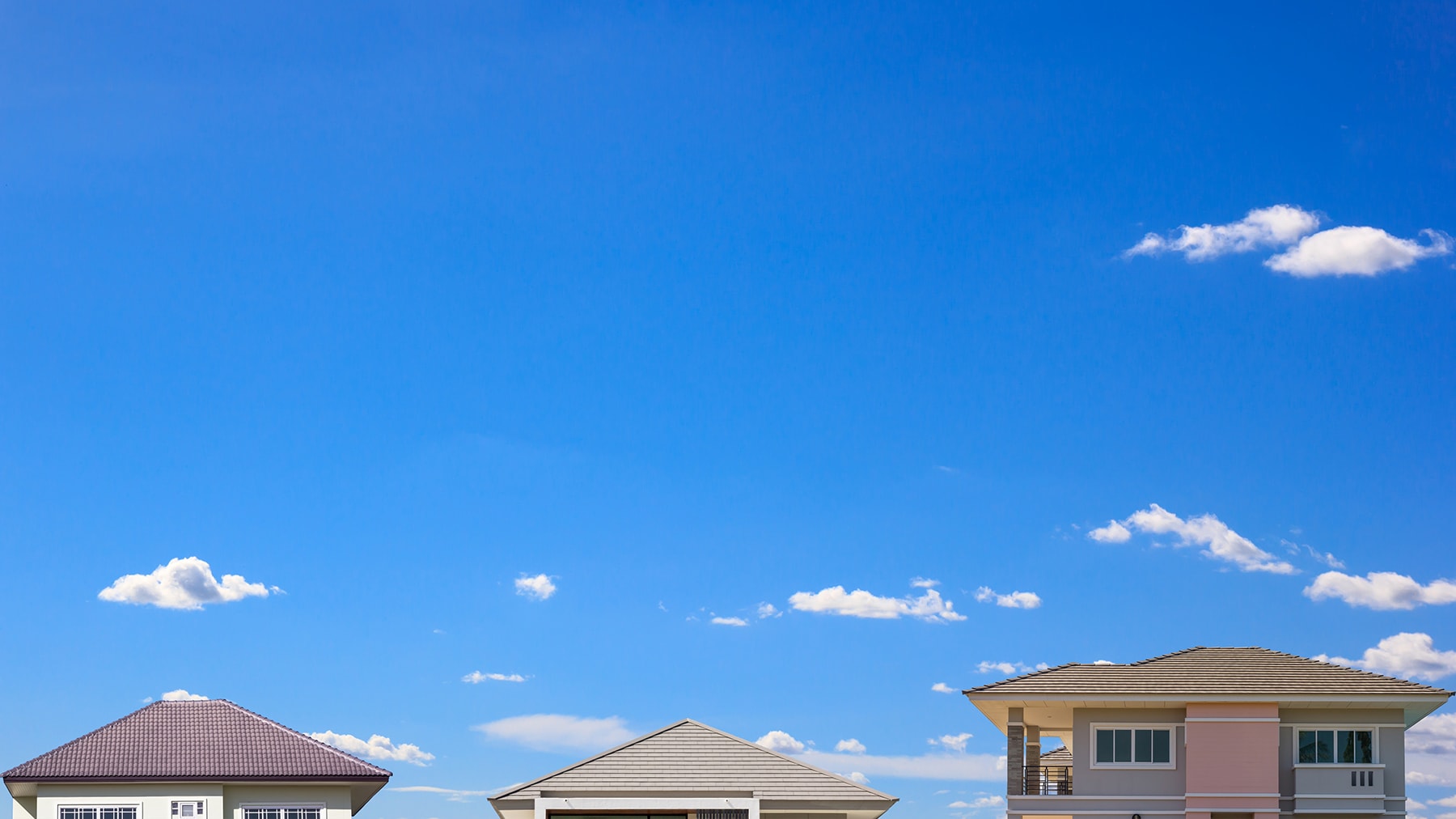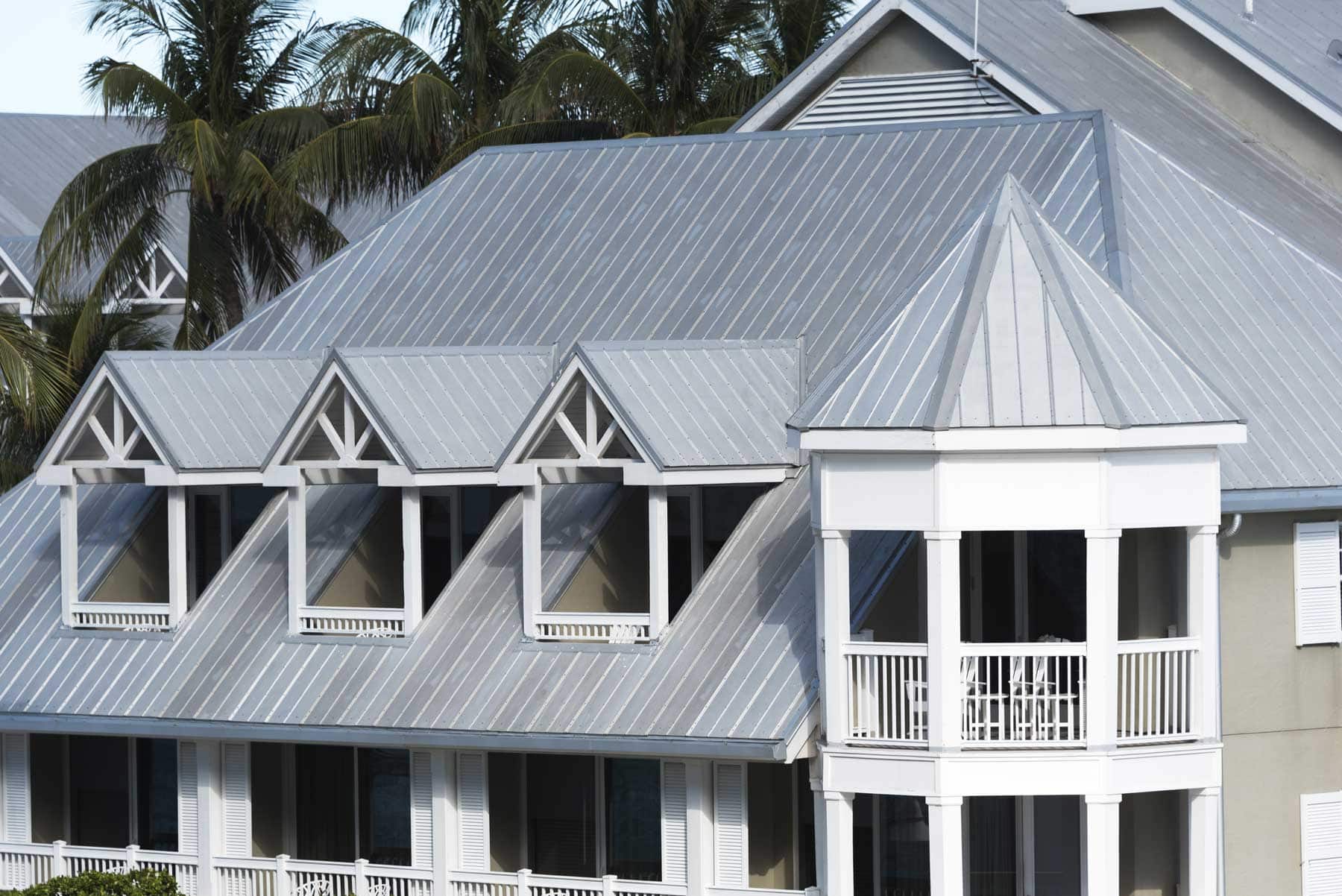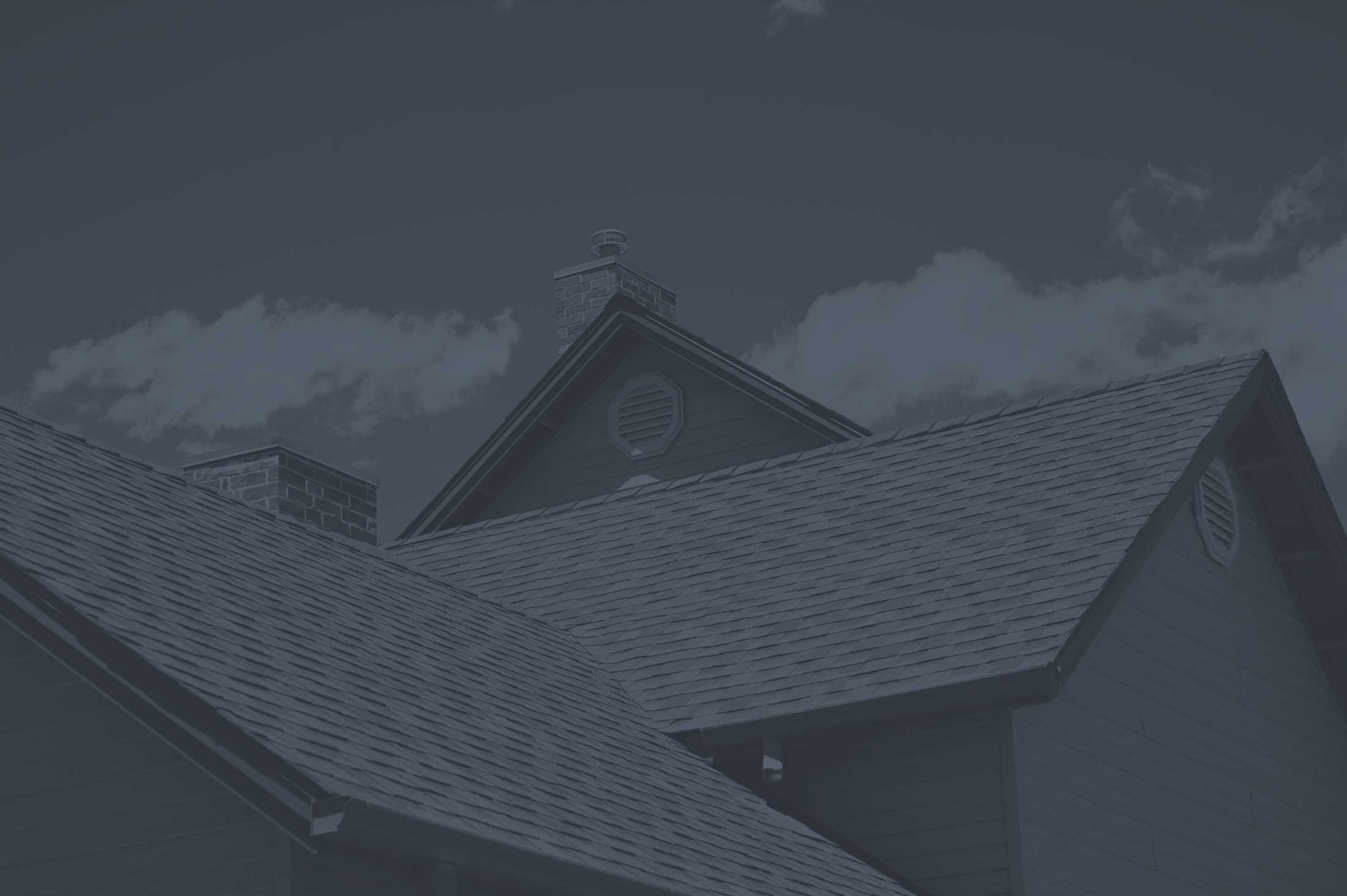See costs in
your area
Enter Your Zip Code
As a homeowner or property owner, there are certain things about your roof that you need to know, such as how to properly care for your roof and check for damage, repair leaks, and when to bring in the professionals (and how to choose the best ones for the job).
After all, it is the roof over you and your family’s heads!
What’s more, it is also important to understand the different types of care and maintenance required for the roofing material and type that you have, how to recognize damage and what you can repair yourself (or hire a roofing company to do) and when you might need to replace the roof completely.
Read on to learn more about maintaining your roof and the signs that you might need to get a new roof or hire roofing contractors for major repairs…
Looking for an Estimate on Roofing Costs?
Enter your square footage below in our roof replacement calculator for an estimated cost.
Roofing 101 – The Basics of What Expect From Your Roof and When It Needs Repairs
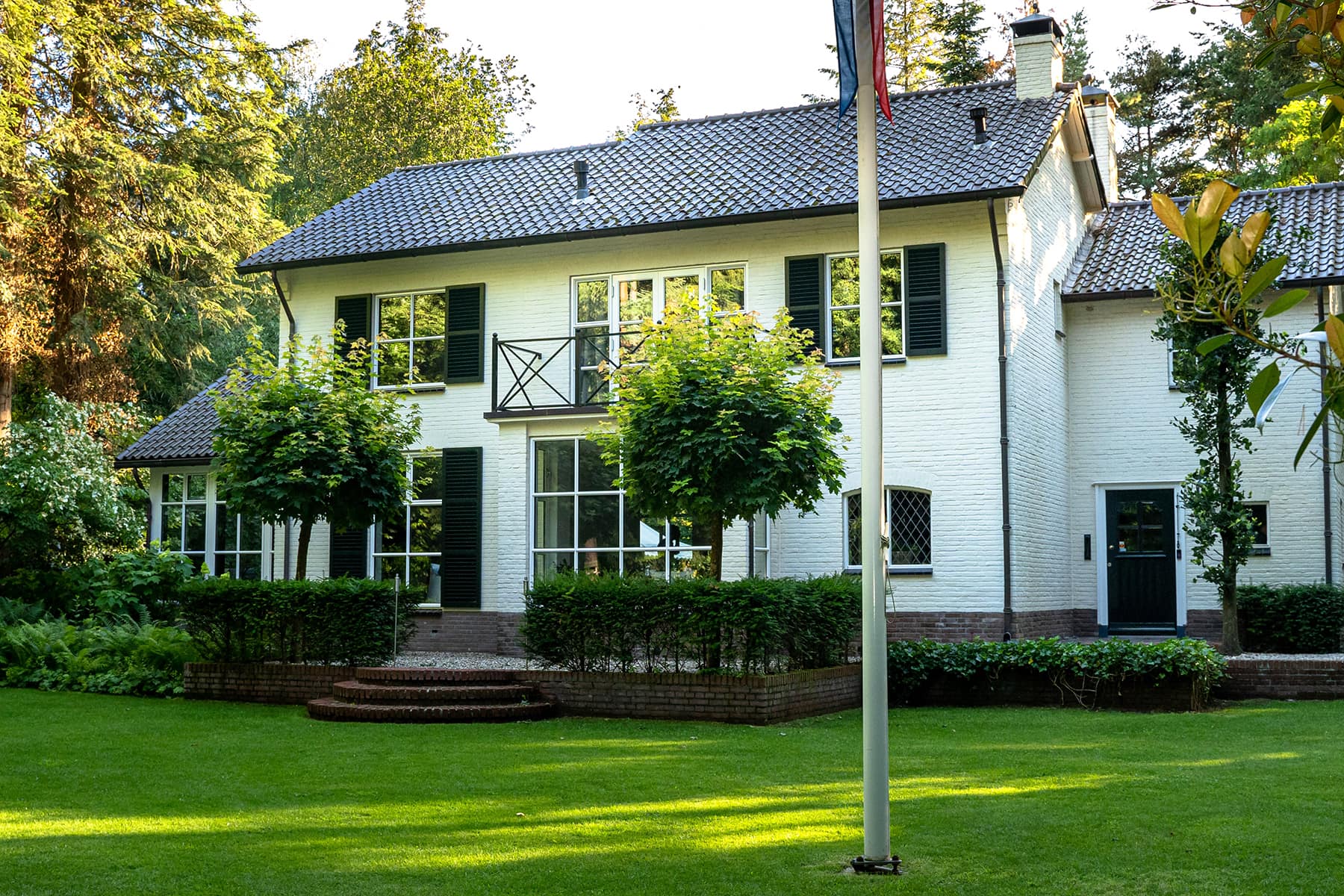
Understanding roofing 101 and the basics of maintaining your roof is essential for any homeowner.
And all roofing systems have certain components, but the details and the type of care that the different kinds of roofing systems require vary.
Before you install a new roof or purchase a property, you should familiarize yourself with the elements of that particular type of roof, the signs that it needs repairs, how to maintain it, and what you can accomplish yourself versus when to call in the experts to do the work.
Another thing to consider when you purchase a property or install a new roof is the maintenance aspect. Some types of roofing require more regular upkeep than others, of course, and all roofs need regular inspections to make sure there are no leaks or minor problems that could escalate into major issues.
You also need to consider the style of the property and your climate; certain types of roofing tend to go with certain types of architecture and there are definitely roofing materials more suited to various climates and types of weather.
When You Need to Get a New Roof (The Obvious Signs)
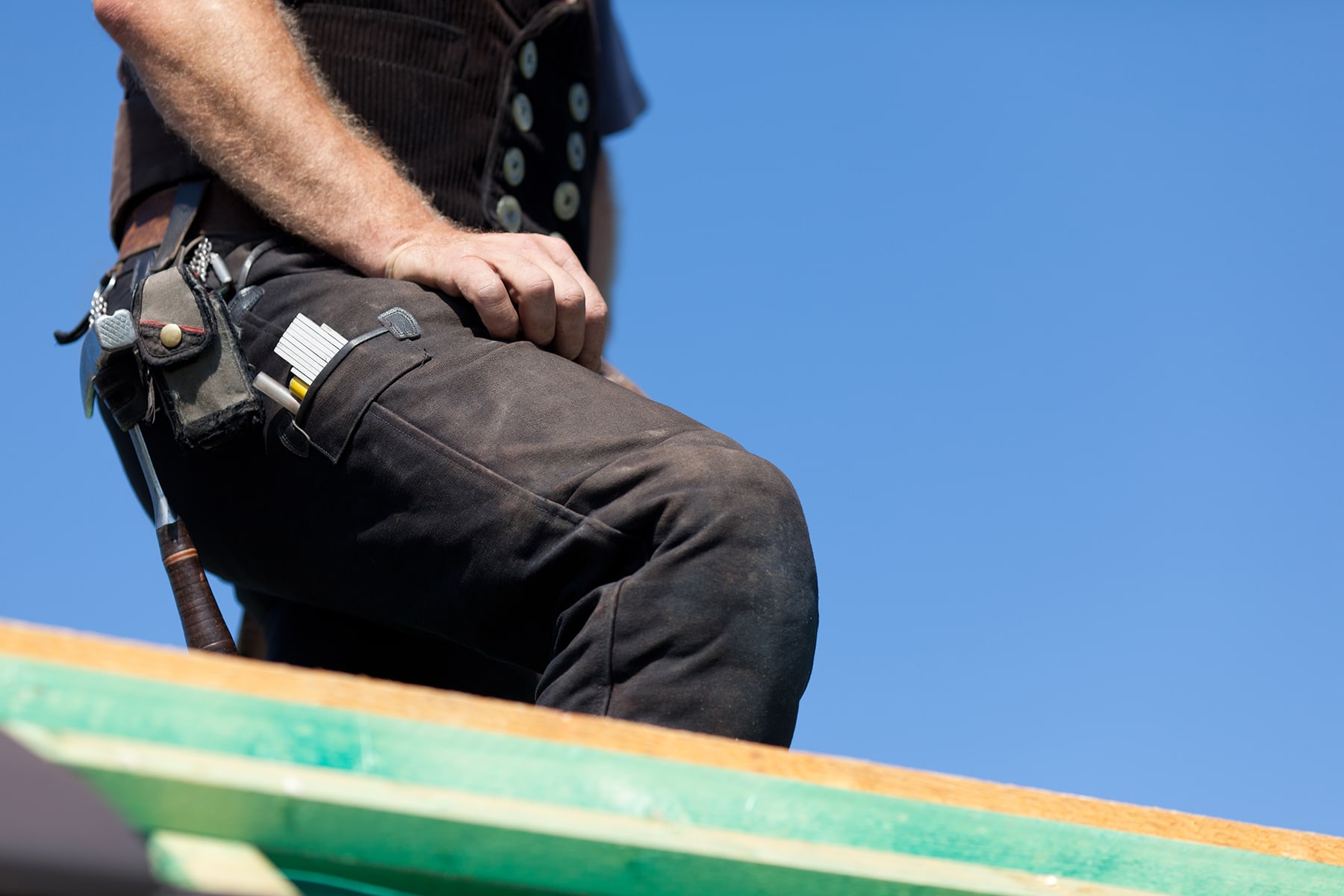
There are a number of signs or factors that indicate that you may need to get a new roof and they run the gamut from the overwhelmingly obvious – a roof that has been torn off in a storm, for example – to the more subtle ones like curling or buckling shingles or loose shingle granules in the gutters or on the ground near the roof, or other visible signs of damage or aging like algae or moss on the roof.
How do you spot these signs that you need a new roof or roof repairs?
Some you will already know, such as the age of the roof, and some will require regular inspections and maintenance.
Some of this work you can do yourself depending on how handy you are or how comfortable you are on a ladder, however, more complicated repairs and replacements are best left to professional roofing contractors or roofing companies.
The length of time that your roof will last depends on your climate, any major weather events or natural disasters that you may experience, and the material used.
For instance, asphalt shingles typically last around ten to twenty years, wood shingles like cedar shakes or cedar shingles can last around thirty years while slate, copper, and tile shingle can stay intact for around fifty years when properly cared for and regularly inspected.
In addition, be aware that if you have a new roof installed directly over an older one (as opposed to stripping or tearing off the old roof) the life span of your roof may be lower or it may require more regular inspections and maintenance.
Looking for an Estimate on Roofing Costs?
Enter your square footage below in our roof replacement calculator for an estimated cost.
How Long Does a Roof Last
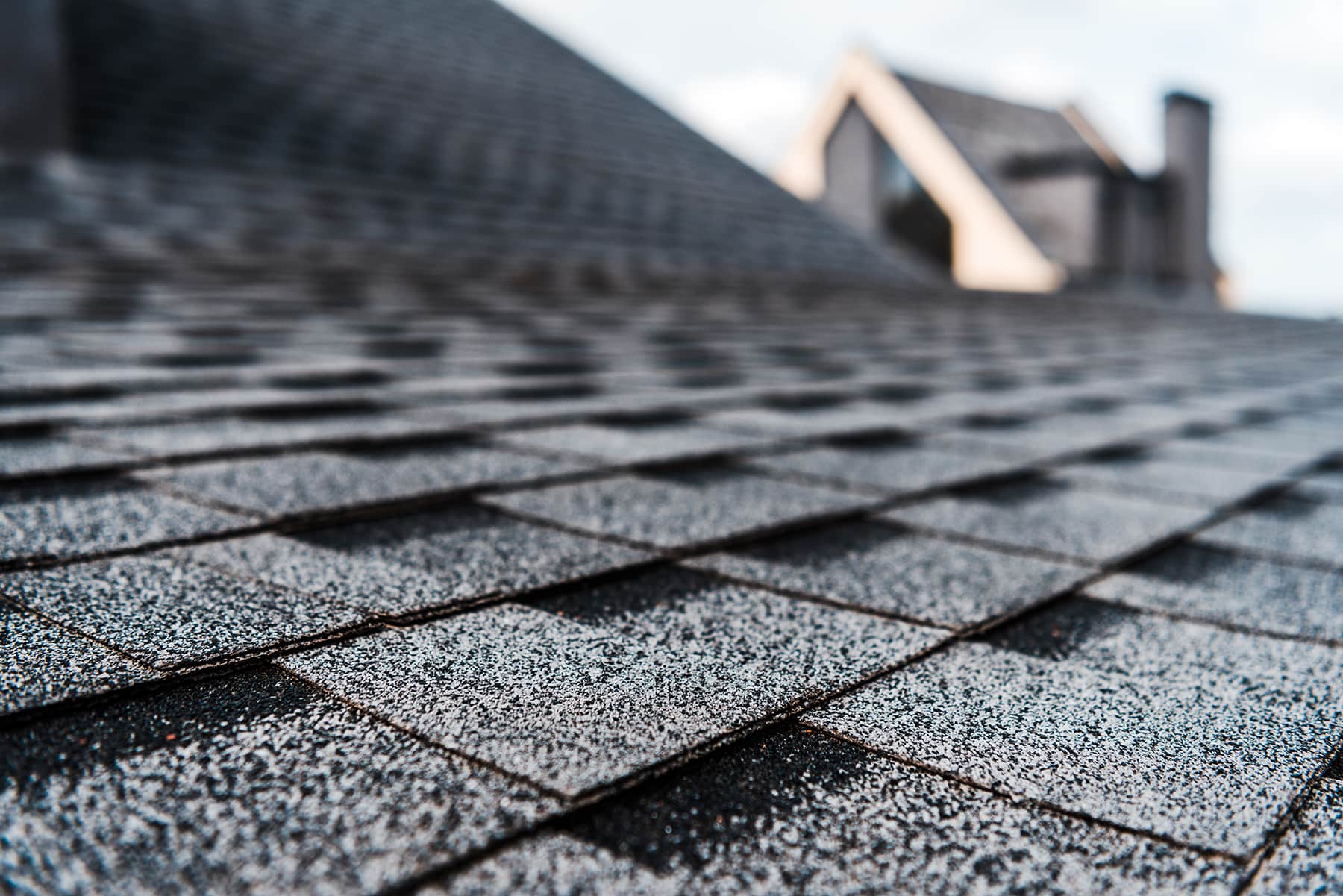
The age of your roof is one of the key reasons you may need to get a new roofing system.
After all, even the sturdiest roof that’s installed perfectly will eventually experience enough wear and tear as to require a replacement.
If you have dealt with high winds, hailstorms, or even more disastrous weather events like tornadoes or hurricanes, then you might need to look into a replacement roof sooner rather than later.
Be aware that the materials your roof is made to affect its longevity as well.
For instance, asphalt shingles tend to last for a decade or so, while wooden shingles can last from twenty to thirty years, and tile, slate, or copper roofing can work for fifty years or more.
The age of your roof is a key indicator of whether or not you need to consider replacing it; what’s more, the older your roof is, the more susceptible it is to damage from weather events like high winds, hail, rain, and other catastrophic events.
Moreover, roofs don’t necessarily need to be exposed to extreme weather events to become damaged – small impacts or rainwater can add up over time.
This is why it is so important to check on your roof regularly and repair small leaks or minor damage before it gets worse.
You should also have your roof regularly assessed or inspected by professionals.
Some of the factors that affect the lifespan of your roof (in addition to its age in general) include precipitation, major weather events or disasters, damage from trees or other debris falling on the roof, moss on the roof, or improper installation.
Furthermore, the age of your roof matters if you are making an insurance claim to get it repaired or replaced.
Older roofing systems experience depreciation in value so your insurance payout will be adjusted based on the length of time your roof has been installed; the actual payout also depends on your individual policy and your coverage.
It’s also essential to understand that small issues like a few missing or curled shingles can often be fixed or replaced fairly simply, especially if your roof is relatively new.
However, if your roof is ten or fifteen years old – or even older – you might want to think about replacing the entire thing with an updated roofing system.
Not only will it help protect you and your family from the elements and likely make your property more energy-efficient, but a brand new roof will also likely increase the value of your home if you plan to sell in the next couple of years.
Buckling and Curling Shingles
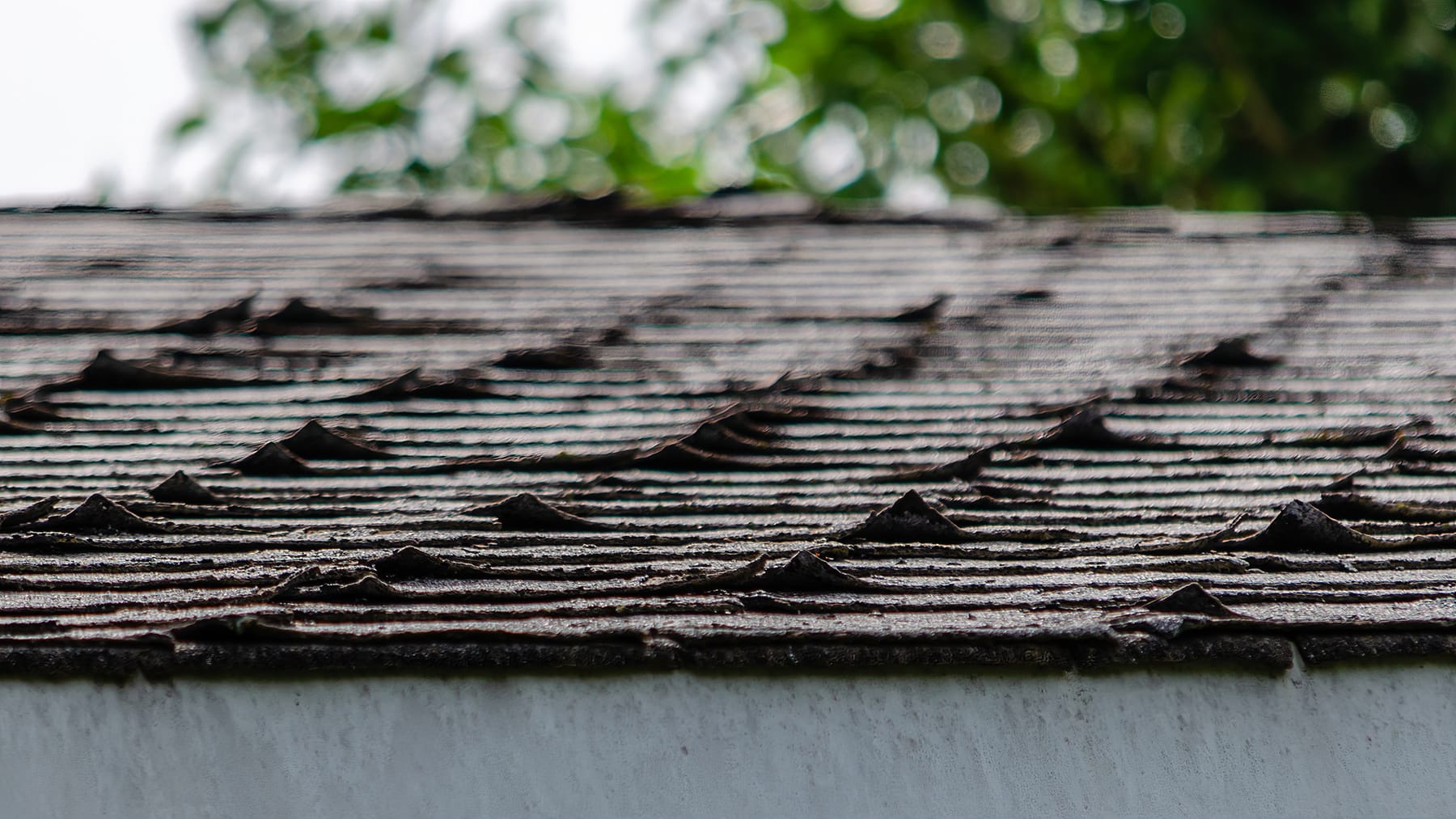
If you notice that the shingles on your roof are lifted, curling up or buckling, then it might be time for a new roof or at least some significant repair work.
Curling or buckling shingles is one of the most commons signs of damage or wear and tear on most shingled roofs, and if you see a lot of curled shingles, it might mean you need to replace your roof soon – and that at the very least you should get your roof inspected.
Keep in mind that buckled or curled shingles will eventually harden and become rigid, causing them to eventually crack and break.
This can occur with shingles made of both organic materials or asphalt fiberglass.
If you only have a few curled or buckled shingles, they can potentially be fixed by using additional adhesive to hold down the curled-up shingle, or you can replace the individual shingles.
That said, if there is a lot of buckled or curled shingles, it might be time to replace the entire roof, particularly if it is over a decade old.
Missing Shingles Roof
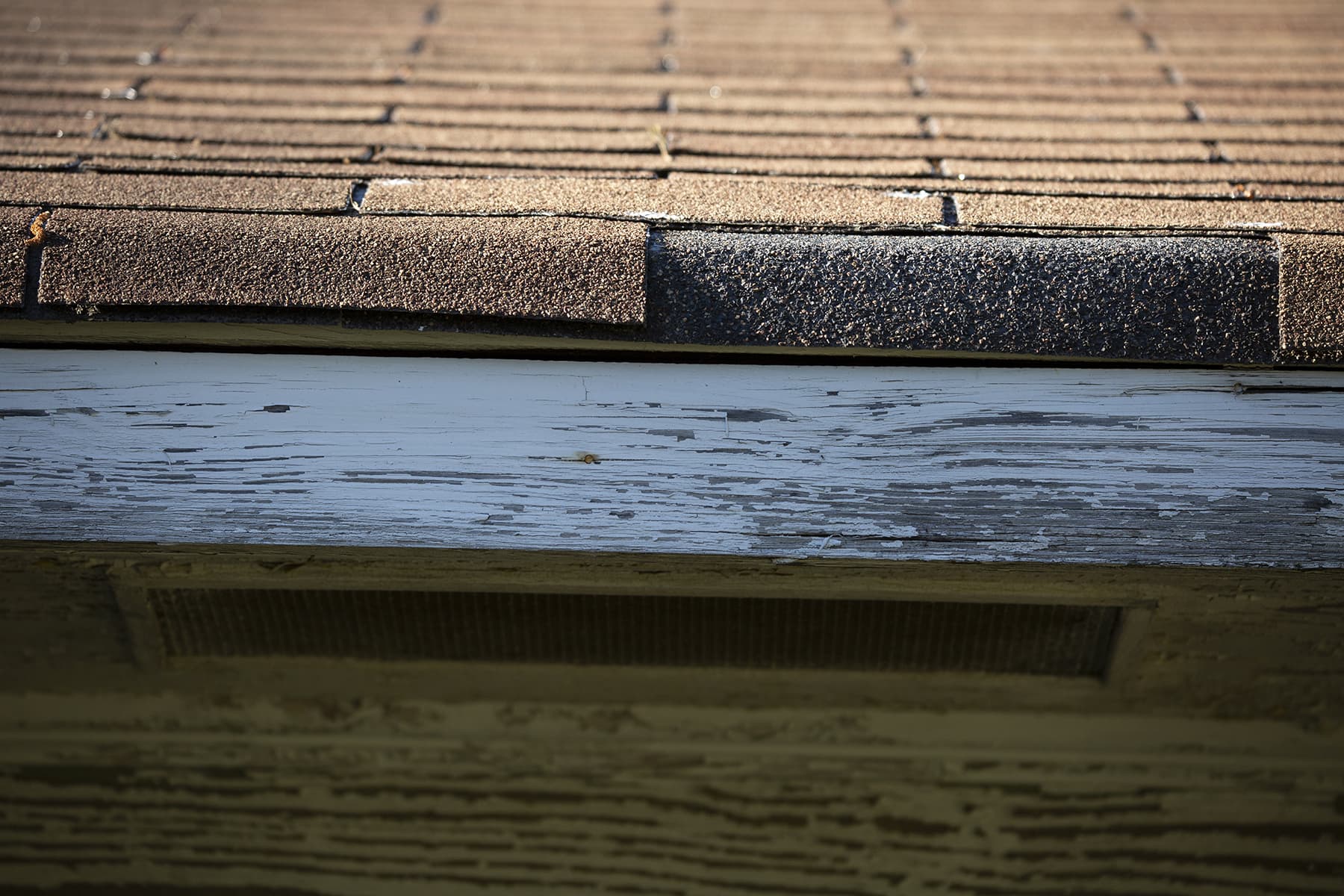
Missing shingles are a definite red flag that your roof needs to be repaired or potentially replaced.
If you notice missing shingles on your roof (or shingles on the ground near your roof) after a windstorm, hailstorm, thunderstorm, or other weather event, then you should immediately reach out to a roofing professional to get your roof inspected and determine what repairs are needed, or if you need to possibly replace the entire roof.
If your roof leaks in heavy rain, then there is a very good chance that you are missing shingles in that spot on the roof.
Water in the Roof Valley
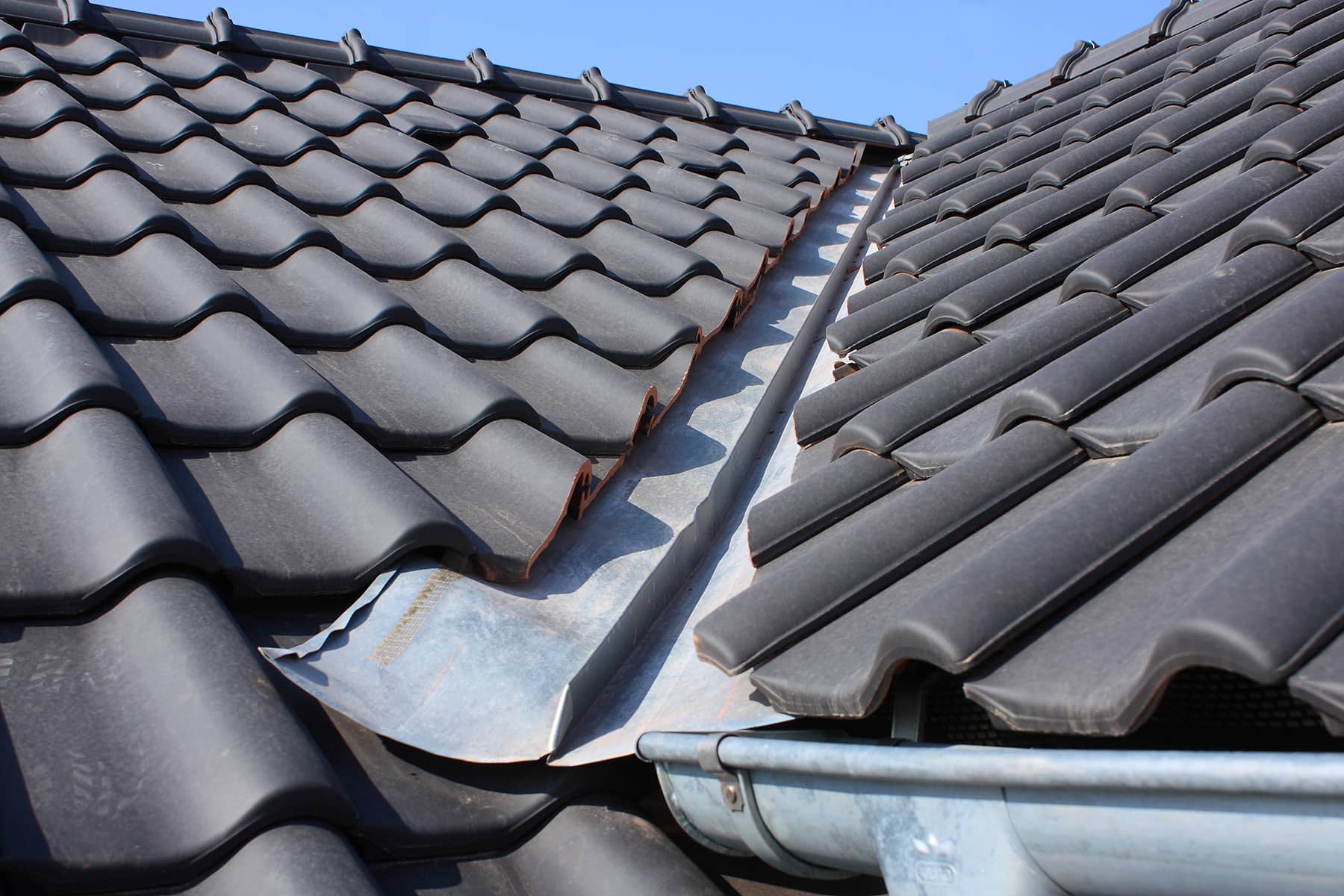
A roof valley is the “V” or “W” shaped metal piece or pieces in the channel where a roof changes direction or angles; roof valleys are designed to direct rainwater to flow off of your roof into the gutters.
Roof valleys in good condition are essential for the overall roofing system to stay solid and function well and must be kept in good condition to protect the health of your roof.
Moss on Roof
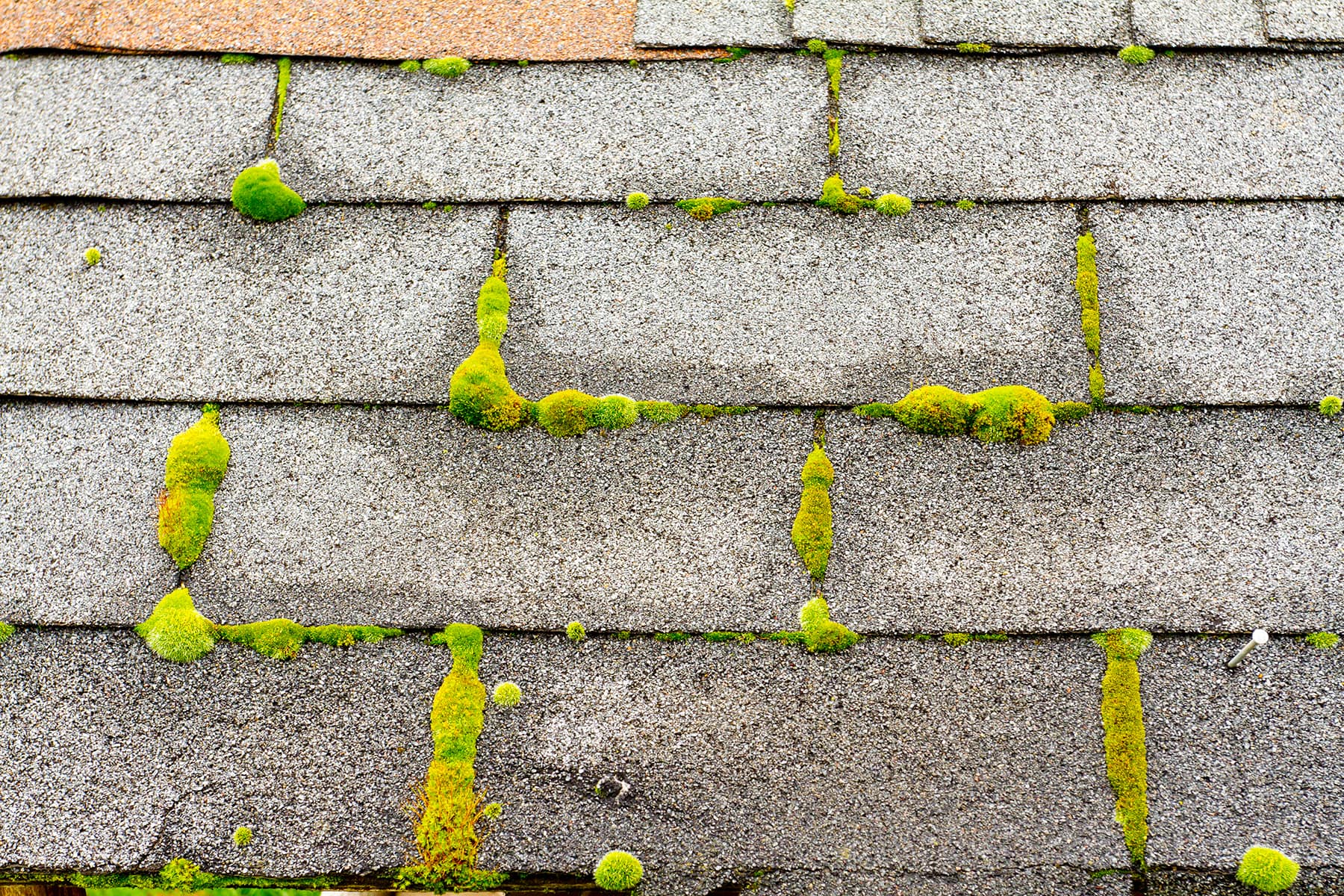
While moss is sometimes considered an attractive feature (think the aesthetic appeal of a cozy country cottage or similar structure), it poses a significant detriment to the structural integrity of a roof.
That is because moss forms in a damp or wet environment and absorbs moisture while establishing roots within the roof, resulting in degradation and weaknesses that lift up shingles, leading to bacteria and mold growth.
It is possible to remove moss from your roof on your own if you are somewhat handy and comfortable clambering about on your roof using dish soap, bleach, or even distilled vinegar mixed with water at a 2:1 ratio for a roof moss killer.
Algae on Roof
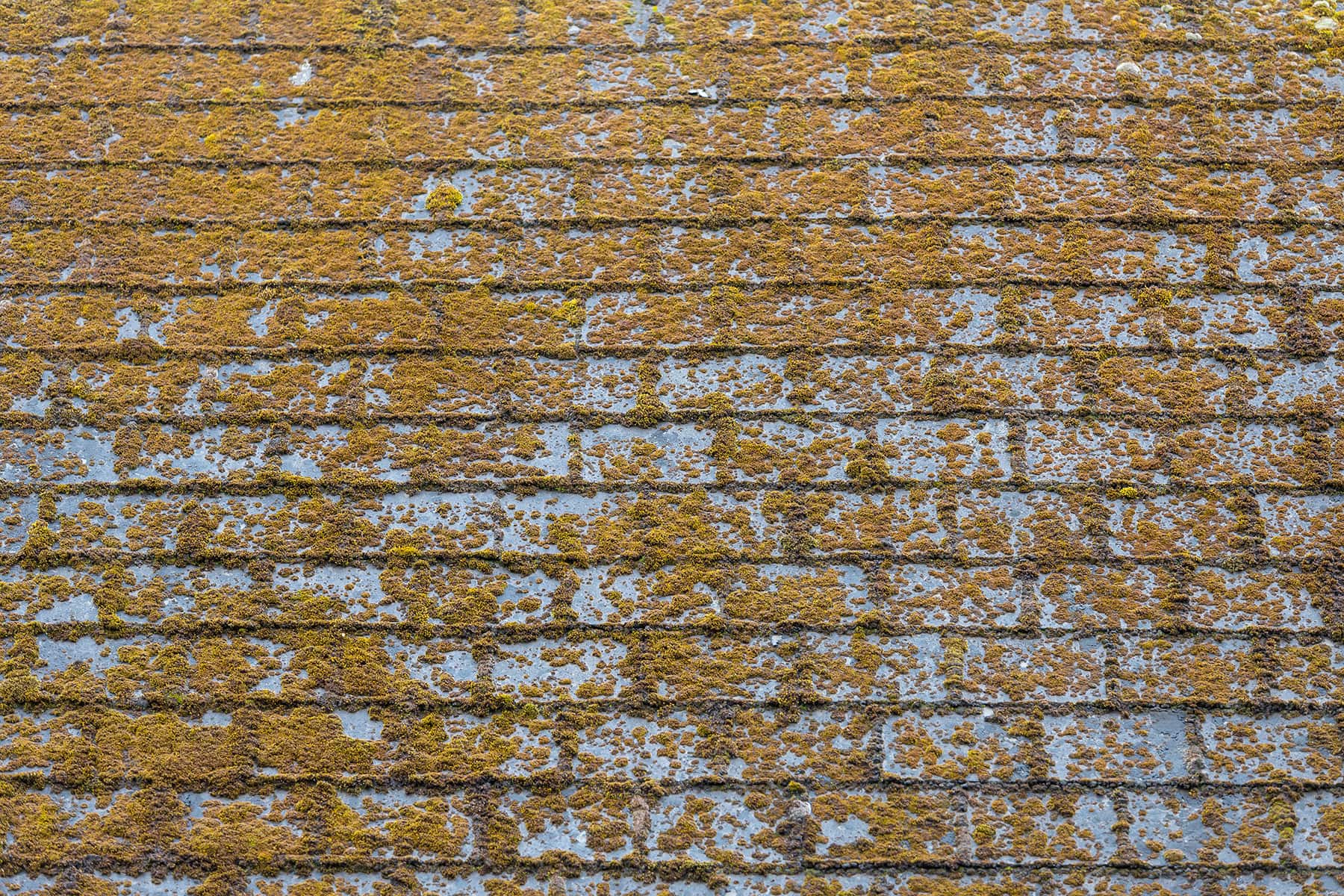
Algae on the roof or black stains or streaks that look like mold that can appear on roofs even in places that are far from the ocean; blue-green algae or Gloeocapsa magma is commonly found in places with warm and humid summers.
It is particularly likely to occur on light colored asphalt shingle roofs and while it might not actually damage the roof itself, and green shingles are certainly not aesthetically pleasing.
So how do you remove algae from the roof?
The same methods involving bleach, dish soap, or distilled vinegar that you use to remove moss from a roof will work for algae, although you might want to change the ratio to 1:1.
Debris on Roof
If you have experienced a major storm, high winds, or other powerful weather, there may be debris like tree branches or other objects that end up on your roof, causing damage like cracked shingles, loose shingles that then get knocked off the roof, and even holes in the roof and under layers.
Debris on the roof is easy to spot – and if you are comfortable getting up a ladder, you can likely remove it yourself. That said, if you notice cracked, missing, or otherwise damaged shingles, it is time to call in a roofing company or contractor to assess and fix the damage.
Also, it is a good idea, to ensure that any large trees overhanging your roof or situated close to your house are regularly trimmed back in order to mitigate potential damage from branches being blown off during high winds and storms.
Excessive Sunlight and Heat

While strong sunlight and high heat might not be the first things that you think of regarding roof damage, if you live in a hot and dry climate excess sunlight and high heat can cause discolored shingles as well as warped shingles that crack, curl, and buckle which can allow water to enter the roof when it does rain, which of course causes further damage.
Roof Hail Damage
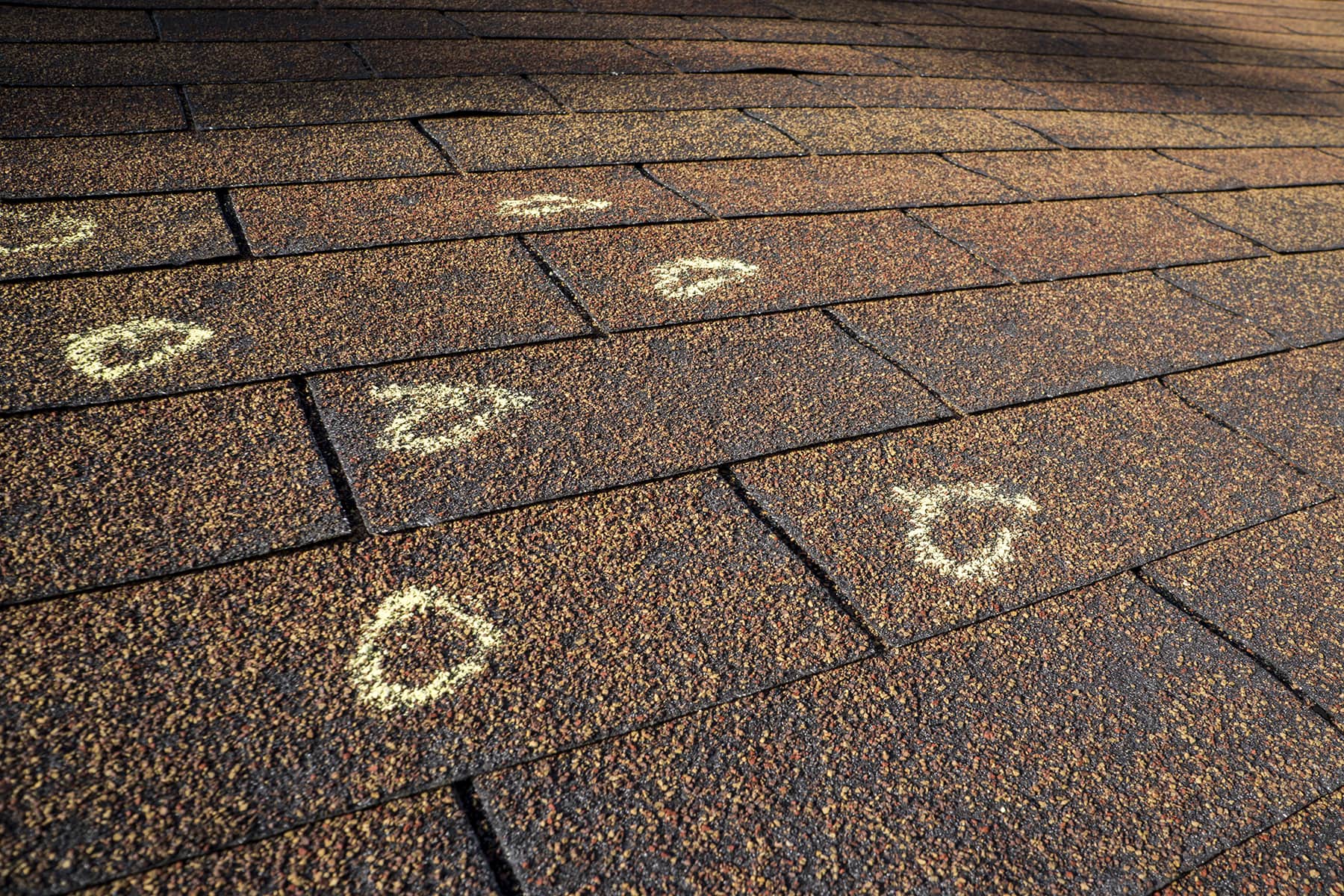
While all kinds of weather can cause damage or problems with your roof, hail storms might be the most dangerous.
Hail can dent or bruise shingles when it falls on your roof, resulting in indentations or cracks that can allow water to sit and seep into your roof and attic or top floor over time.
After a hailstorm, one of the first things you should do is inspect your roof or bring in experts to check things out and make sure your roof is in good condition and if not, perform any necessary repairs.
Hail damage on shingles looks like a smattering of round indentations or divots on your roof, and if you have an asphalt roof, there will be missing granules that will end up in the gutters or on the ground near your home.
What does hail damage look like on a roof?
Look for other damage on your property and ground level, e.g. dents on cars or any vehicles left outside, or damage to outdoor furniture, or other items in your front or back yard.
Roof hail damage pictures below.
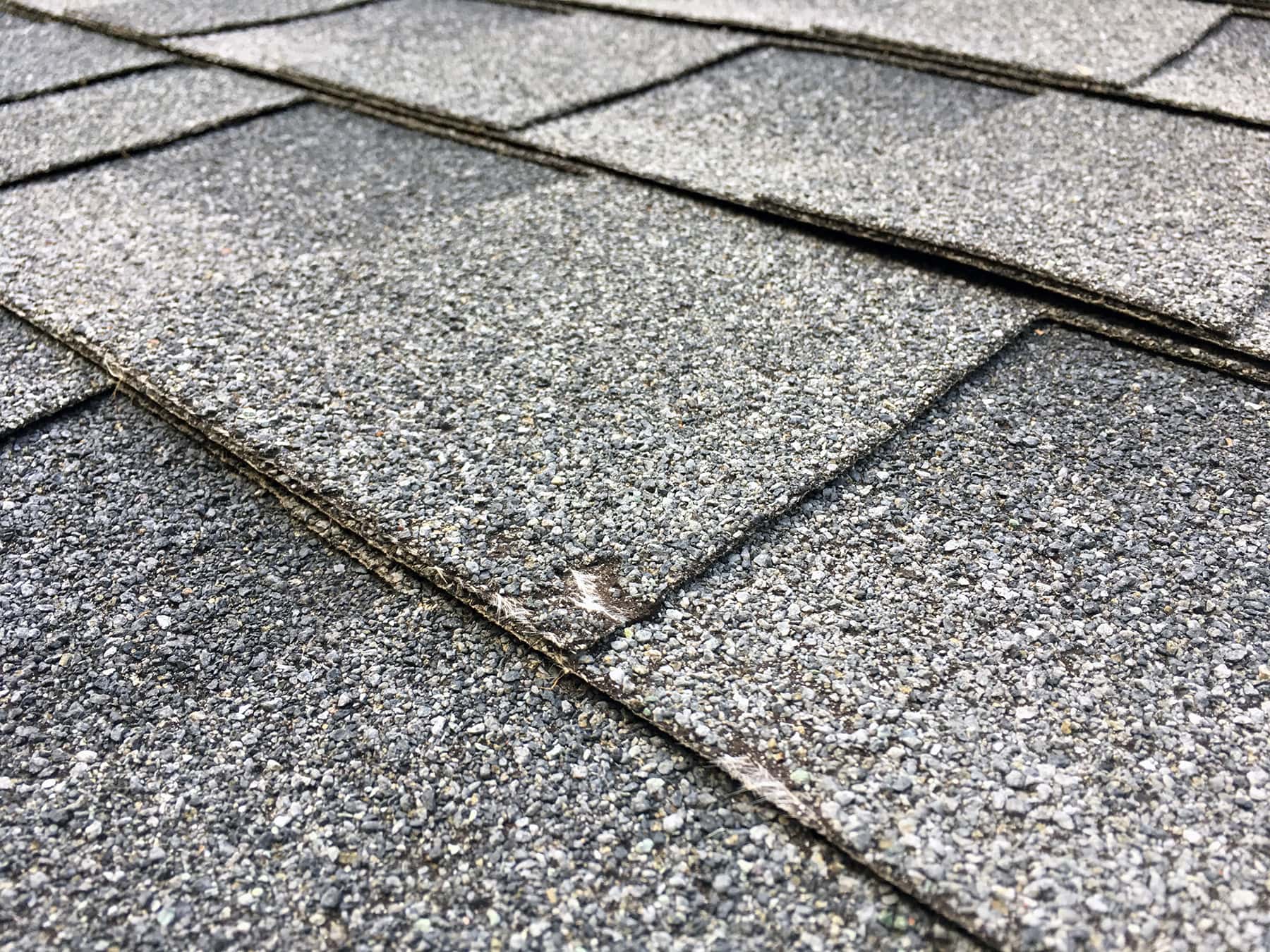
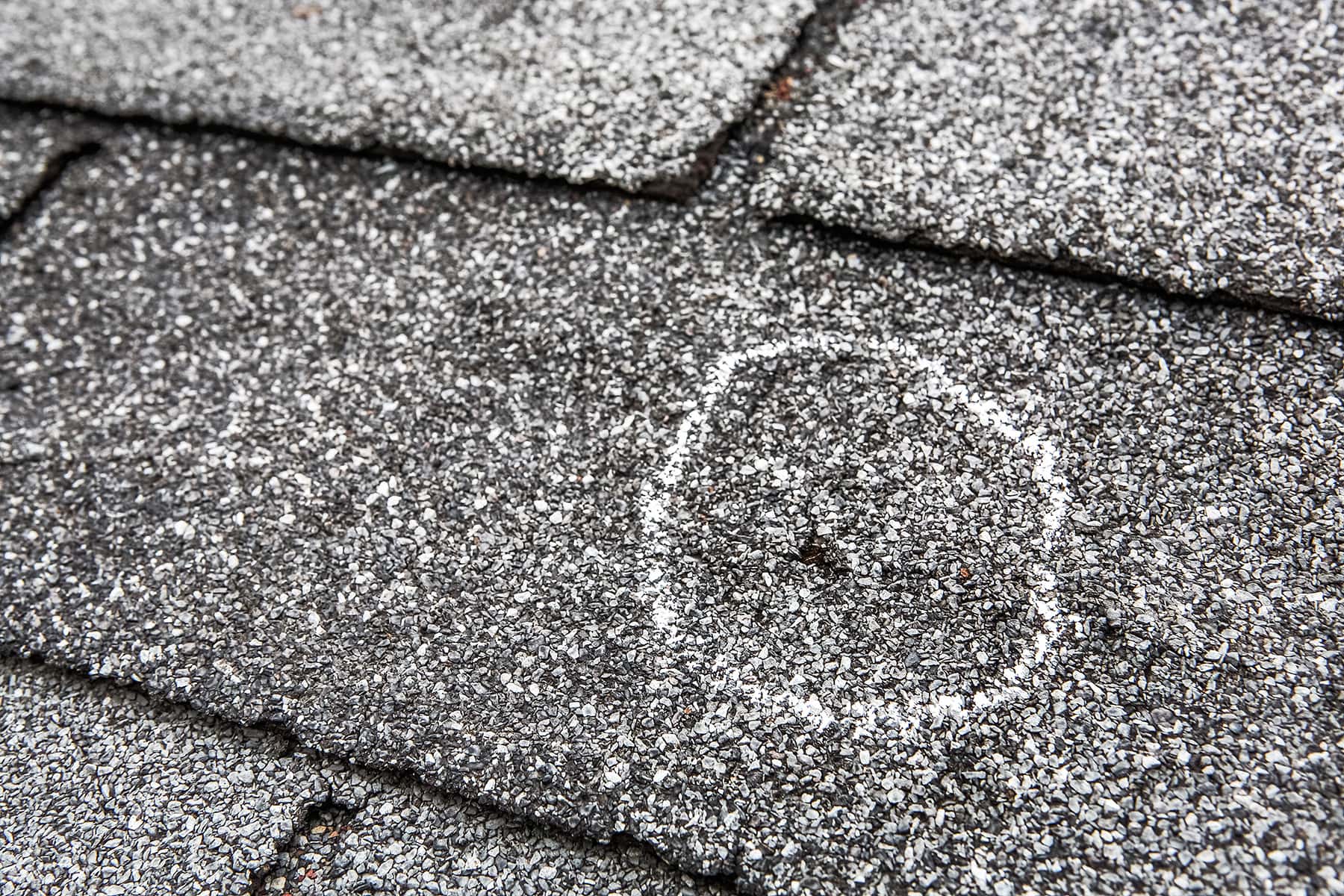
Wind Damage Roof
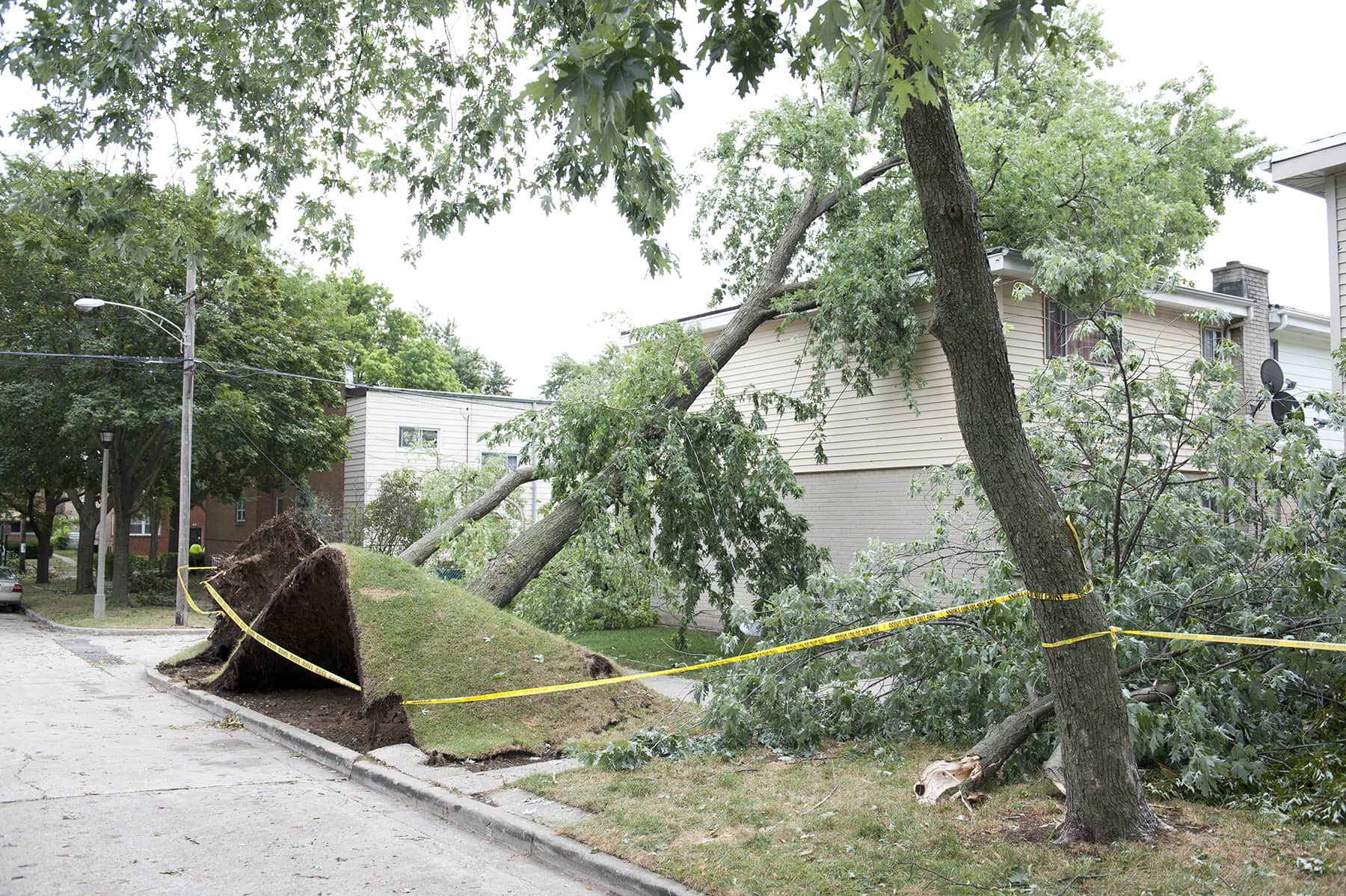
Weather events like hail storms, tornadoes, fires, hurricanes, floods, thunderstorms, wind storms, earthquakes, and other natural disasters can all cause damage to your roof.
While sometimes the damage might be obvious – think major leaks, holes, or even a roof that is completely torn off.
Wind storms or thunderstorms, tornadoes, hurricanes, and other weather systems that result in high winds are perhaps the most potentially damaging natural catastrophes for your roof.
That’s because not only can windstorms cause shingles to blow off the roof or be punctured, they can result in debris like tree branches landing on the roof, damaging the roof’s protective layers and therefore allowing for water to leak in.
Moreover, wind damage isn’t always obvious.
Of course, you will notice missing shingles or shingles lying on the ground in your yard or near your roof, but wind can also cause the adhesive seal holding the shingles in place and weaken the structural integrity of the roof, allowing water in and further damage to take place.
Overall, after any major storm or other natural disaster or significant weather event, it is essential that you check out your roof yourself if you feel comfortable getting on a ladder and scrambling around, or bringing in a professional for their expert opinion – or both!
If you or a friend or family member have a drone with a camera that is also a possibility to view your roof that allows everyone to remain safely on the ground.
All of that said, weather damage is perhaps the biggest factor in regard to roof damage and the need to completely tear off and replace a roof, so keeping on top of things after a storm or other calamity and bringing in professionals to inspect the roof and make any necessary repairs will go a long way towards maintaining the health of your roof and the health and value of your home or other property.
Roof Damaged Flashing
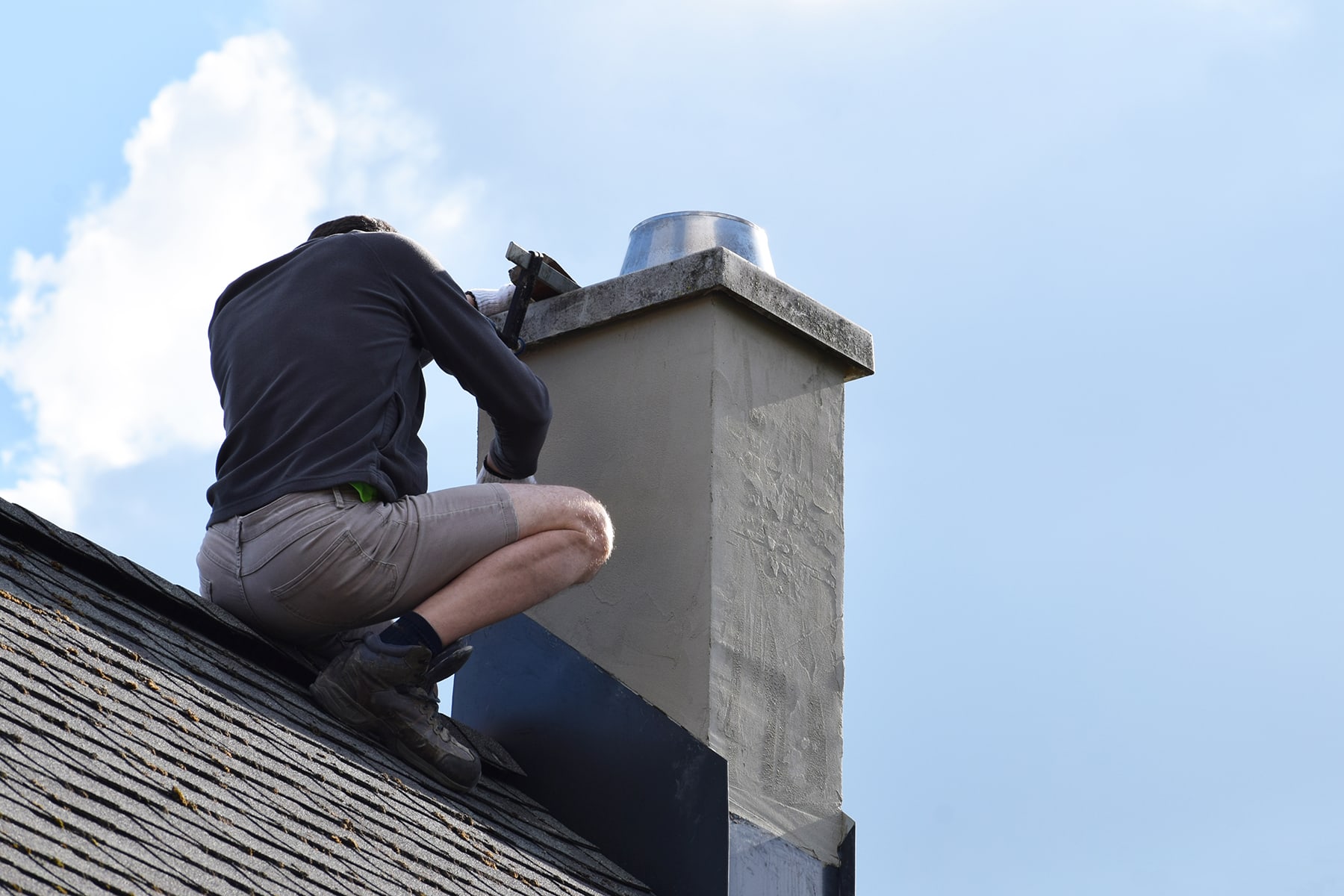
Roof flashing is a thin material – usually galvanized steel but sometimes plastic or other corrosion-resistant composite materials – that is used to direct water away from seams around the chimney, vents, skylights and other design or functional elements along with other critical or leak-prone areas of the roof and toward the gutters.
If the flashing on your roof is deteriorating, it can lead to roof damage and leaks into the attic or spaces below the roof.
Loose Shingle Granules in the Gutters or on the Ground
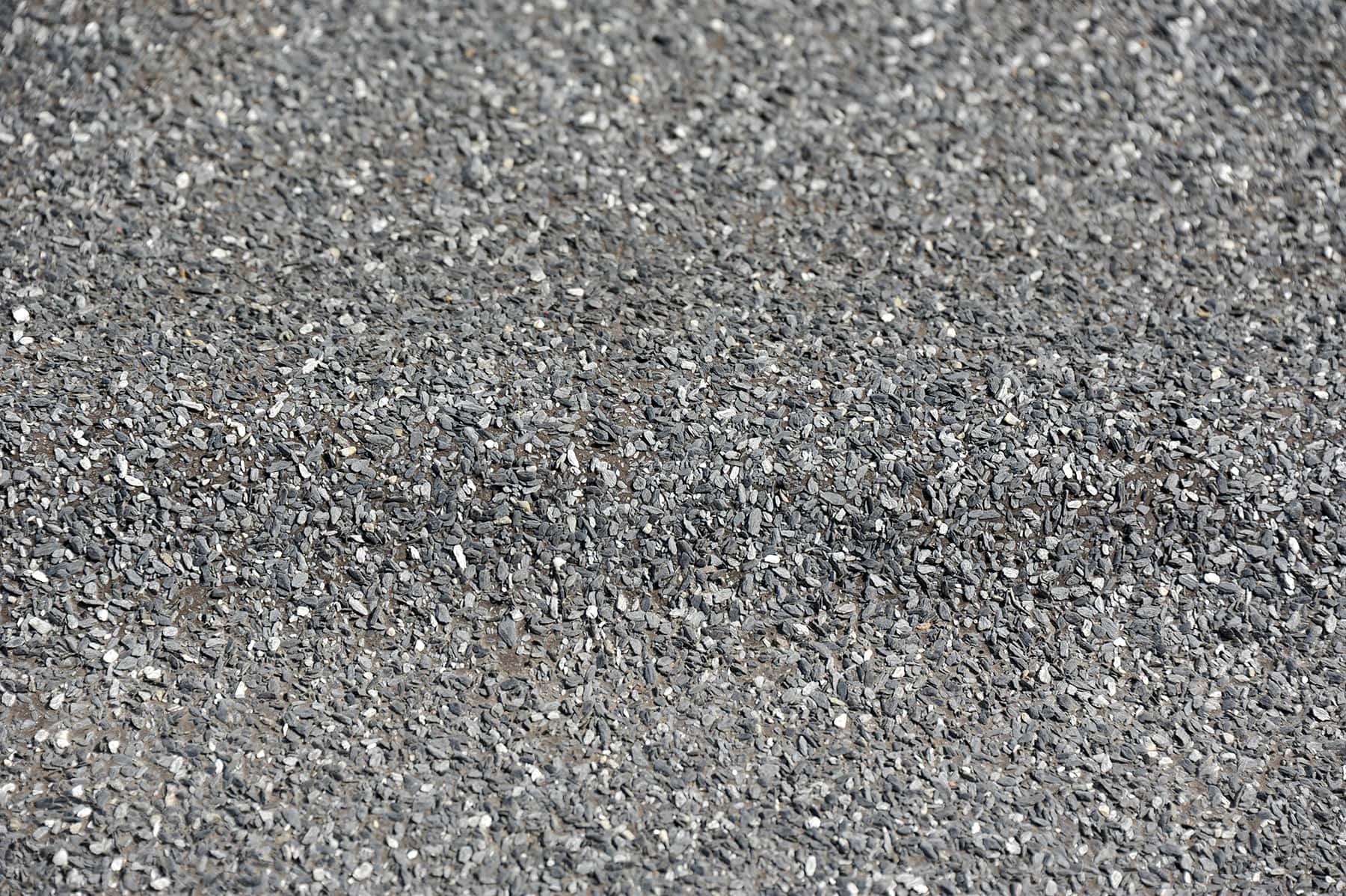
If you have an asphalt roof, the shingles are made of granules composed of crushed colored stone and minerals embedded on an asphalt backing material.
If you notice granule loss on the roof, it is not uncommon for a few granules to come loose even on a newly manufactured and installed roofing system, if you notice an excessive or increasing amount of granules in the gutters or on the ground near the roof, then it is definitely time to get your roof inspected and possibly repaired or replaced depending on the roof age and the damage.
You may also notice thin horizontal lines on the shingles where granules have been worn off the top of the shingle from rubbing against the shingle above it; this may indicate that the shingle has become loose and is flapping in the wind, damaging the shingles around it.
Daylight or Sunlight Viewable Through Roof Boards
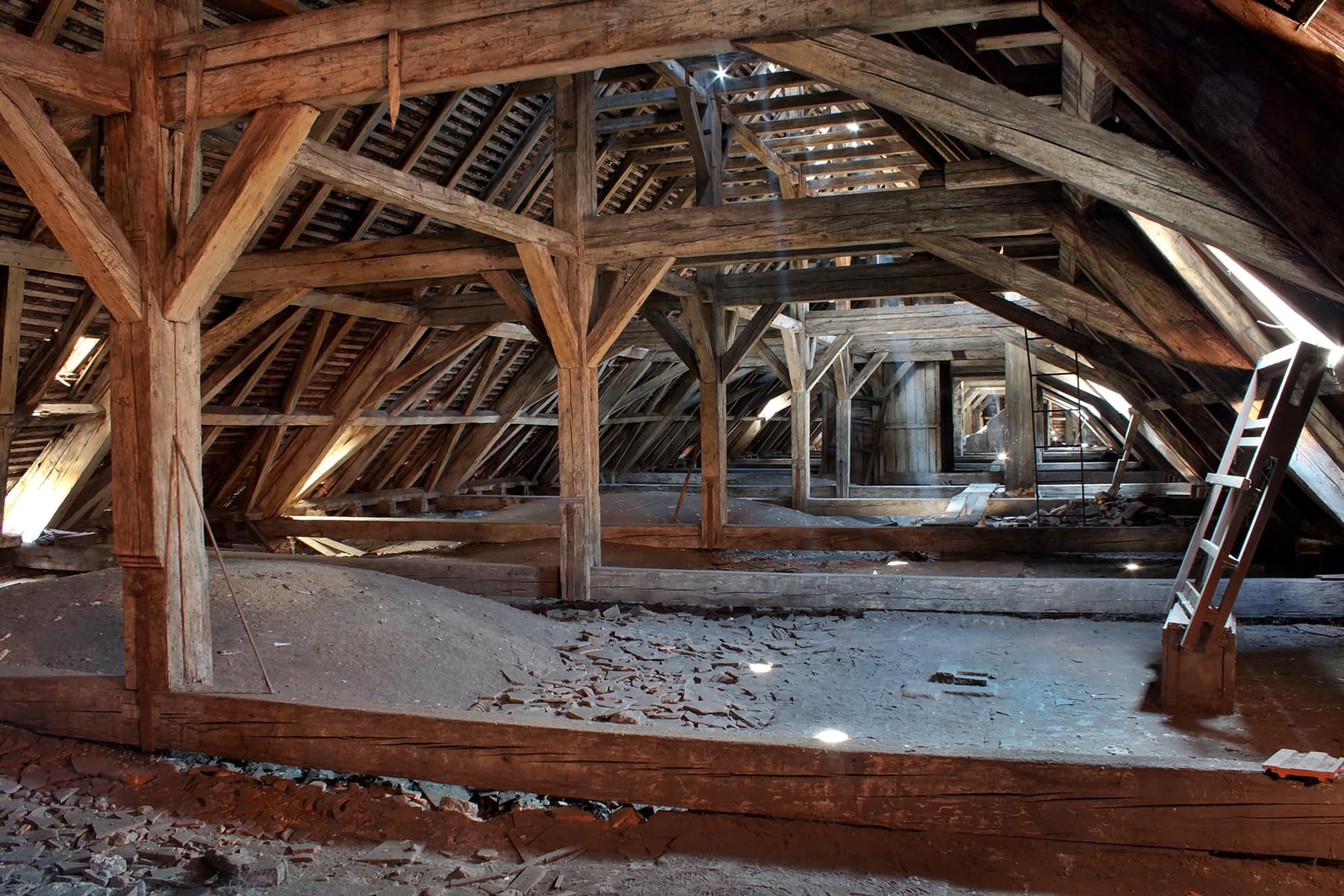
If you go up to your attic or the rooms or spaces directly below your roof and see spots where sunlight is streaming through, then you definitely have a problem that likely requires the attention of roofing professionals.
Of course, there should never be holes in your roof substantial enough for daylight to show through, so this indicates an issue with both the shingles or roof overlay and the underlying components like plywood sheathing.
How can you see if there are holes in your roof that have permeated all the layers, resulting in leaks coming into your home?
Head up to the attic, crawl space, or the upper floors and eaves just underneath the roof with a flashlight, ideally on a sunny day so you can accurately assess where the problem areas are located.
Any stains, streaks, or other discoloration should also be cause for alarm.
Increased Energy Bills

If you are seeing a gradual increase in energy bills with no other explanation, then it might be time to look at your roof.
Oftentimes, this is the result of water leaking through your roof’s outer layers into your insulation and attic, causing it to become less effective and your heating and cooling costs to rise.
After all, a poorly insulated roof requires more energy to keep the house warm in the winter and cool in the summer, because the heat and cool air both flow more easily out of a badly insulated structure.
Keeping track of your energy bills month over month (allowing for some seasonal shifts) will help you stay on top of things as it relates to your roof and any potential problems.
Lack of Proper Roof Maintenance
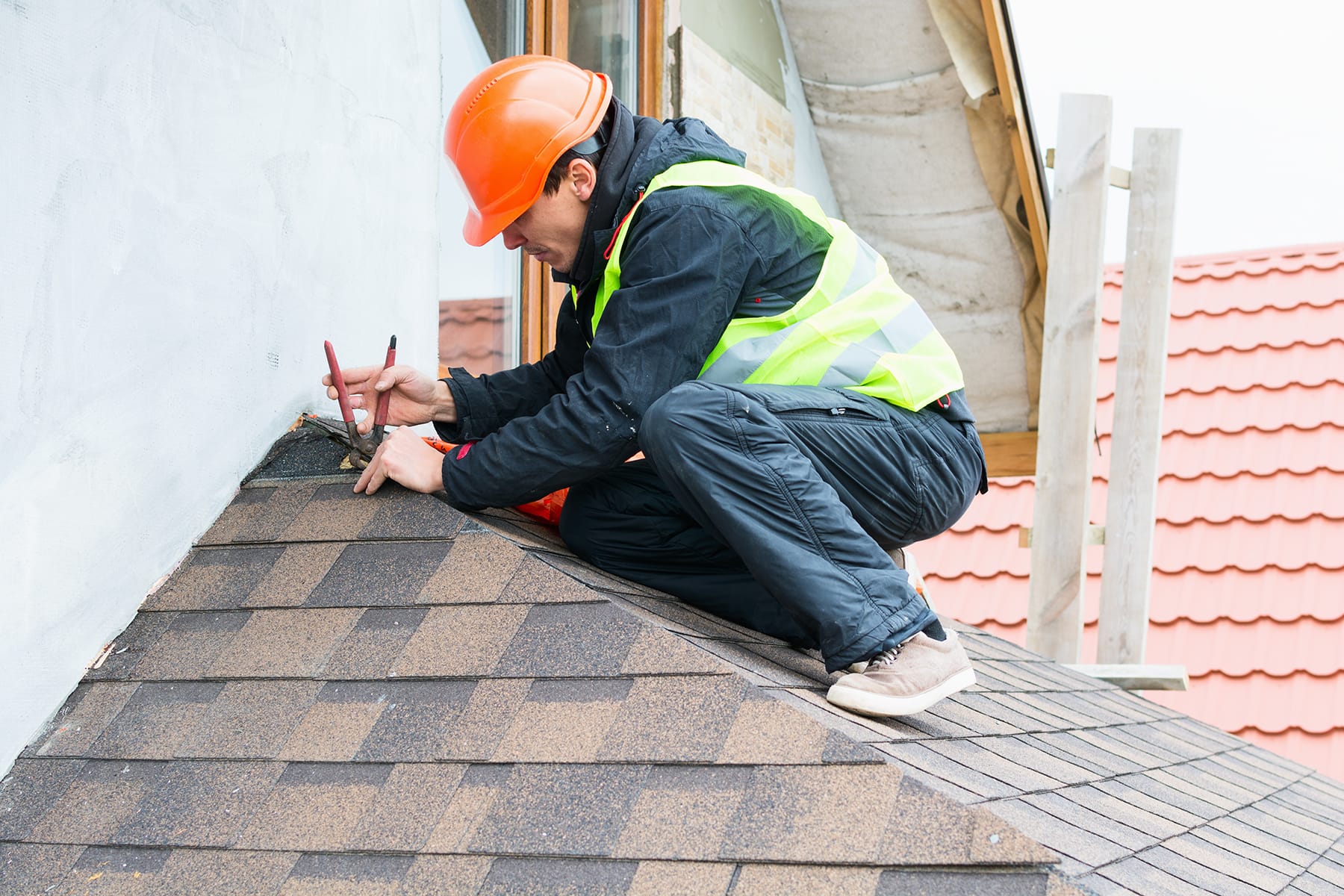
A roof that is not well maintained can require expensive repairs or even a complete replacement sooner than typically necessary.
For instance, leaves and other debris can build up in roof valleys or around the flashing, causing ponding or standing water to leak into the roof.
Tree branches landing on the roof and resting there can also cause damage.
Inspecting your roof and removing any debris and fixing small leaks after a storm or major weather event is essential for the overall health of your roofing system, whether you do it yourself or bring in professional roofers.
Roof maintenance tips (DIY)
Improper Roof Installation (Signs of a Bad Roofing Job)
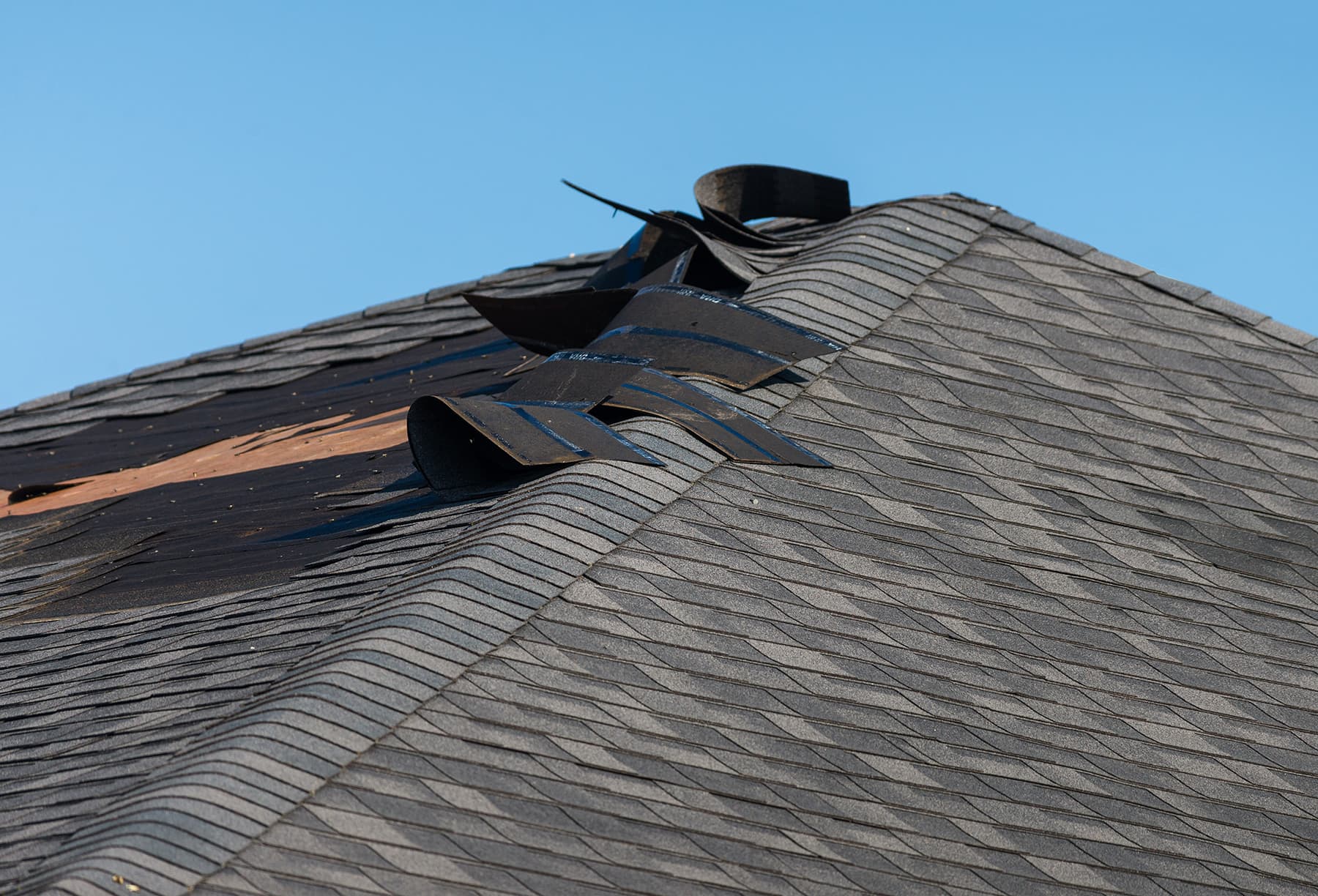
Sometimes, a roof that hasn’t suffered any weather damage or other physical damage fails due to incorrect installation.
This can result in weakened shingles that allow for water to leak in and undermine the structural integrity of your roof, shingles to loosen and blow off or fall off during storms or other high wind events, and make the roof more susceptible to damage during major storms or other weather catastrophes.
Roof Leak Repair
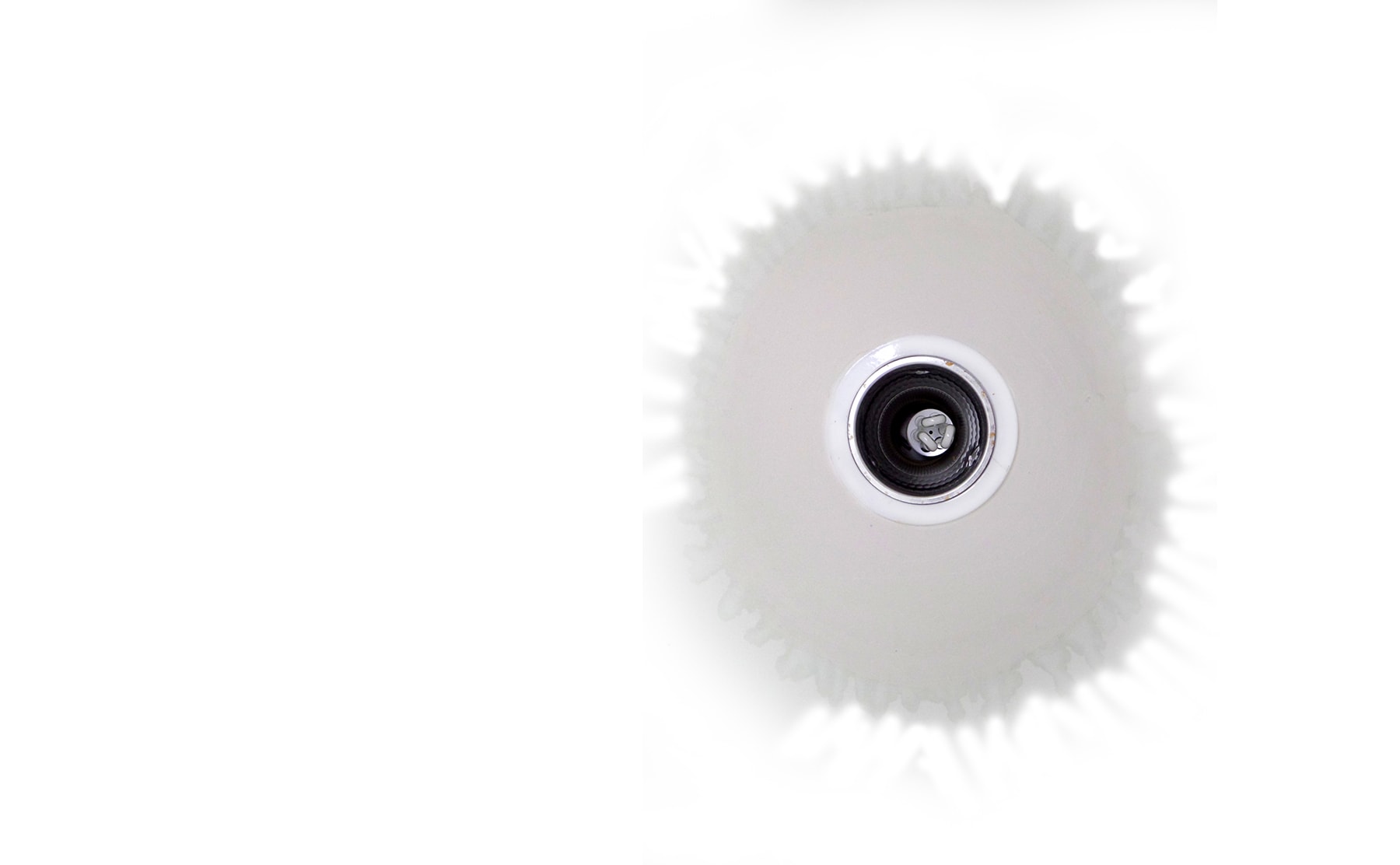
Depending on how handy you are and the extent of the damage, you can potentially fix your roof on your own if the issues are relatively minor like a few cracked, curled, or buckled shingles, or even missing shingles.
Repairing a couple of shingles or sealing up minor leaks is fairly easy; however, if you have multiple missing shingles or large patches with damage, leaks, or mold, you may want to bring in a professional roofer or roofing company or even replace the roof completely, particularly if your roof is on the older side.
However, if you only see a few curled shingles, you can straighten them out and reseal them with a caulking gun and roof sealant (which should be readily available at your local Home Depot, Lowe’s, or hardware store) if you are comfortable climbing up on your roof and doing your own repairs.
Collecting loose asphalt granules from the gutters or the ground around the roof and sprinkling them around the area where you are making repairs can help make everything look cohesive.
How to Repair a Roof Leak
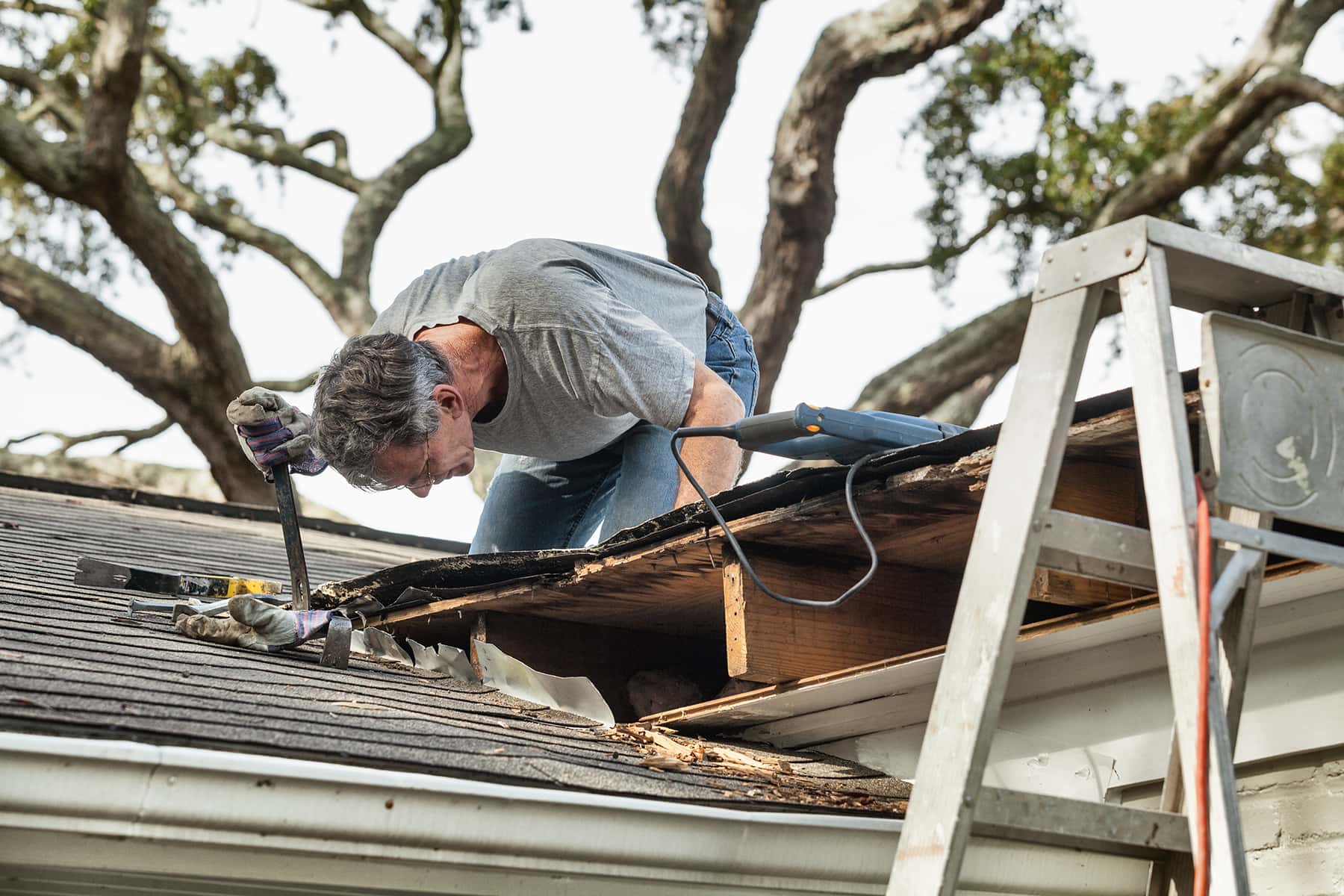
You can also replace broken or cracked shingles on your own, provided there are only a few shingles missing and you are fairly handy and capable of climbing up on your roof.
You can remove the nails associated with the broken or missing shingle and replace it with a new one using roofing nails and possibly a blow dryer to make the surrounding shingles more pliable and therefore easier to place the new shingle.
Applying roof sealant or cement over the edges of the new shingle and the nails holding it in place is the final step in this type of repair.
Another aspect to keep in mind is that shingles are more pliable at warmer temperatures, so if you are fixing your roof in cold weather, you may want to use a mild heat source like a blow dryer to soften things up. It is important to use something that will warm up the shingles gently – a blow torch or other high heat device will likely damage the shingles even more.
Roof Flashing Repairs
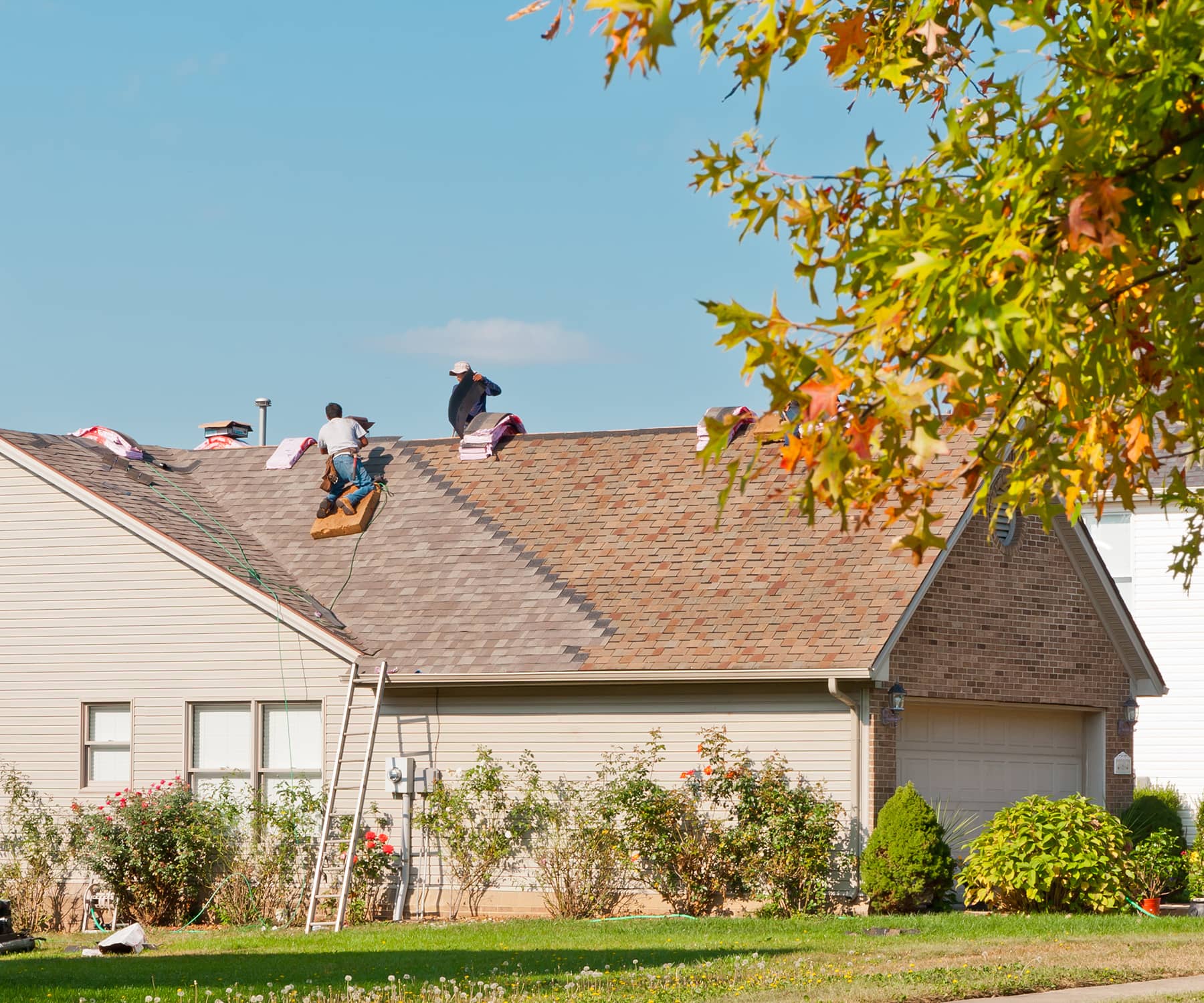
The flashing around the chimney, vents, skylights, or other features on your roof is also vulnerable to leaks and damage, and you can potentially repair it yourself with roof sealant or roofing cement.
If you see splits in the seams, blisters, bubbles, or mold or algae around the flashing it is time to look into repairing your roof yourself or hiring a roofing contractor or roofing company to fix it. Furthermore, if you notice significant damage to the flashing on your roof, it might be time to replace your roof all together.
Note that if you are fixing blisters or bubbles on your roof, be careful to only cut and mend the top layer of the roof – if the damage goes deeper, then you may need to tear off your roof and replace it with a new one.
Large or open seams in the flashing or serious damage to the underlayer of fiberboard substrate or similar materials might mean that you need to start over with a brand new roof – which might not be a bad thing depending on the age of your roof, the value of your home or other property, and whether or not you plan on selling or moving in the near future.
One thing to note is that it is nearly impossible to fix a roof leak from the inside – you’ll need to get up on your roof in order to repair and fix curled or buckled shingles, replace missing shingles, and otherwise solve minor problems like small leaks.
That said, you can pinpoint leaks and damage by examining the ceiling and walls of your attic or top floor under your roof by looking for water stains or mold (bring a flashlight) and noting the location so you can find the corresponding spot or spots on the exterior of your home.
Be aware that if you have a pitched or slanted roof, the spot where the leak or damage is will likely be higher up than the place where the water damage or mold is showing on the interior.
It is best to do this while it is raining or immediately after a rainfall; alternatively, you can run a hose over the roof and use that as a way to check for leaks or damage by seeing if and where the water ends up inside the attic or upper floors.
Tear Off Roof
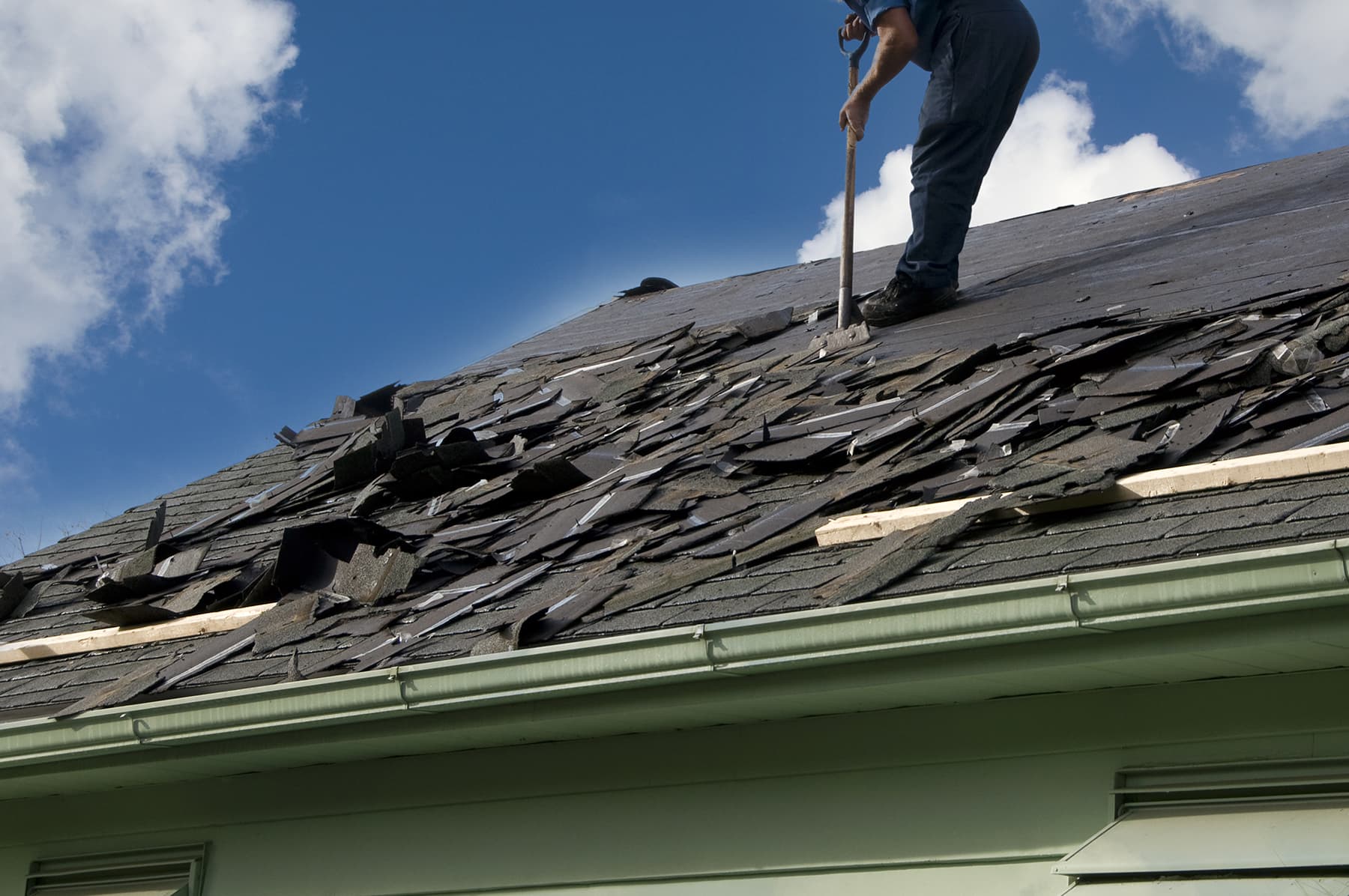
Sometimes you need to completely remove your roof and start over, particularly if your roof is older or you have experienced a major weather event that caused significant damage.
If you have an asphalt roof, it is possible that it can be torn off and replaced in a day or two, especially if you hire a roofing company or roofing contractor(s).
Keep in mind that it may take a roofing team or crew of five to six members to get the work done for a relatively standard sized home.
Installing A Roof Overlay
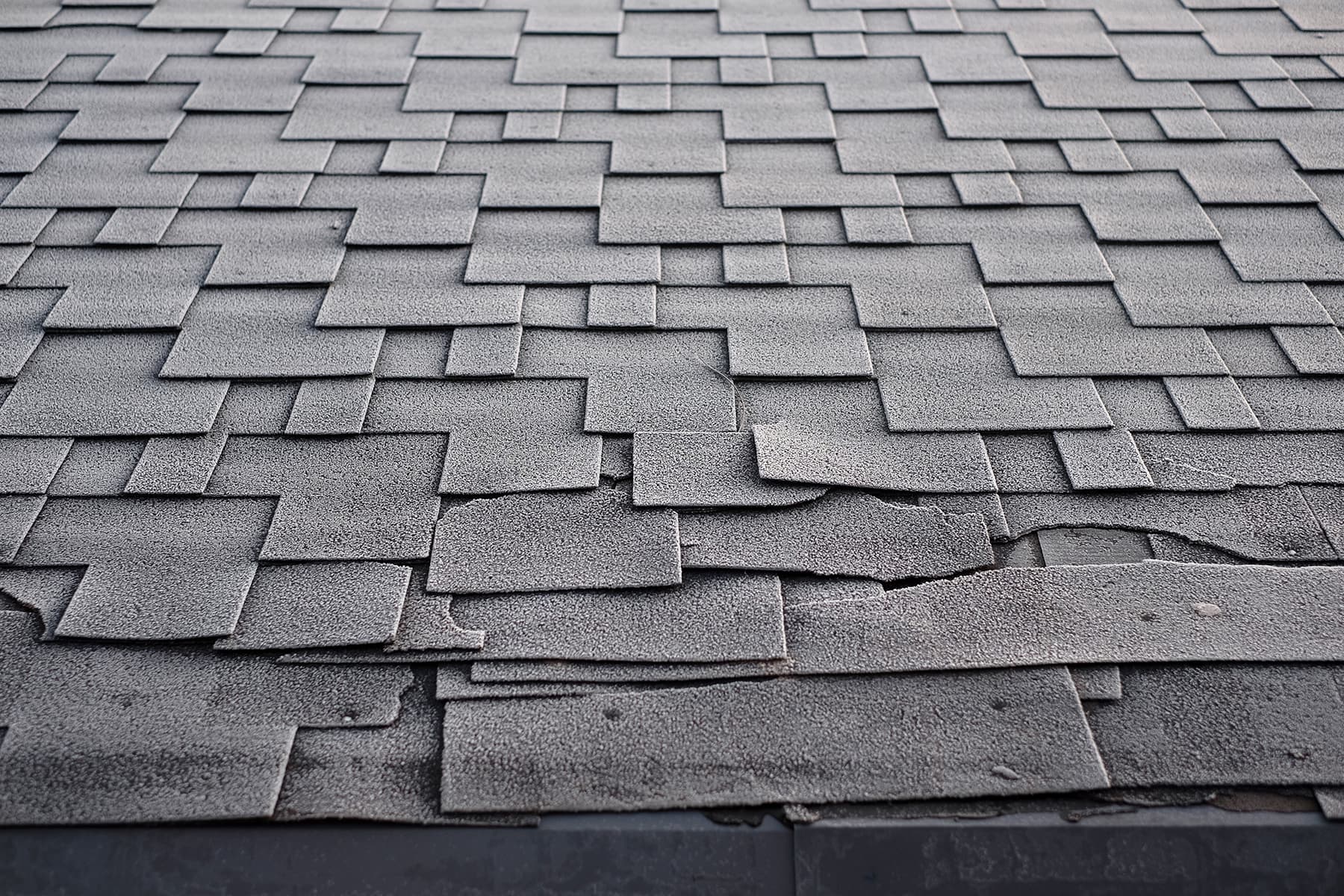
When you get a roof overlay, your existing roof stays as is, while your roofing company lays new shingles on top of it.
Naturally, getting a roof overlay is less complicated than getting a whole new roof installed, because it doesn’t involve removing the whole roof from your house.
Instead, a roof overlay just involves laying a new roof over your existing roof.
A roof overlay can help solve some problems since it adds another layer to your roof and therefore another level of protection to your home or property, and it can be a great choice if there is only some weather damage and you want to improve the aesthetics of your property or add value to your home before you put it on the market.
You should always get your existing roof checked out to ascertain if the current shingles aren’t too damaged and there is no major mold, rot, or previously existing leaks that have since been repaired, if the decking is sound, there are no sidewalls where flashing is needed to join the roof to the building, and there are no other major issues before you decide to go ahead with installing a roof overlay instead of a completely new roof.
However, a complete roof tear off or roof removal does cost more, and in many cases might be the better choice, especially if your roof has been fixed before.
If you’ve had roof leaks repaired or been through a major disaster that resulted in damage to your roof, then you will want to work the new roof company or contractors that you’ve hired to help you decide if a roof overlay is really the way to go, or if you need to tear off your current roof and install a new one.
You should ask your roof installation company or any contractors that you are thinking of hiring for your new roof install for their assessment as to whether you should get a completely new roof (meaning removing the old roof and installing a completely new one) or a roof overlay.
Roof Removal
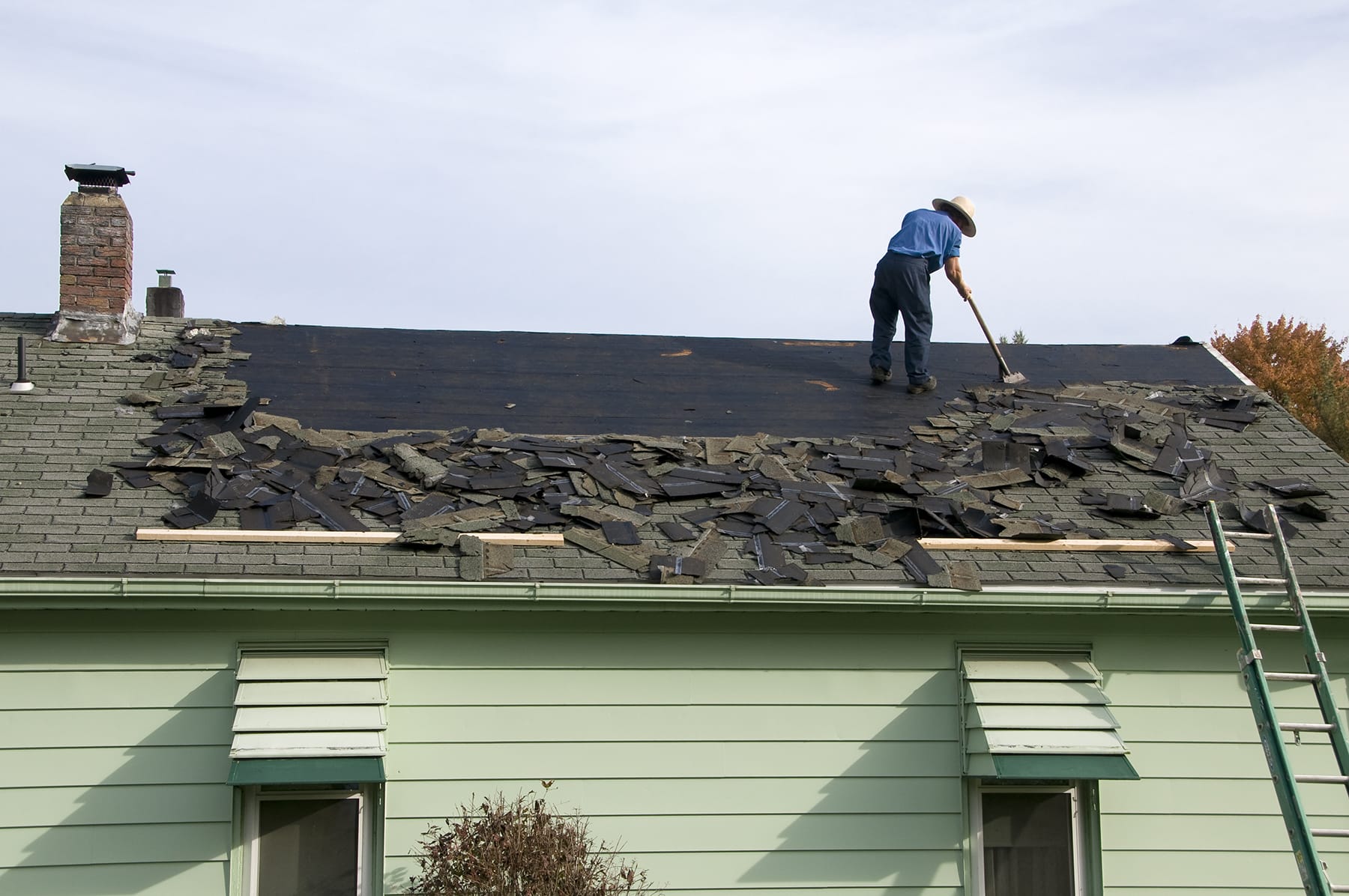
Removing a roof and replacing it with a new one is usually a job best left to the professionals.
Removing your roof completely and replacing it with a new one is a relatively long term project and a complicated task that.
It will likely require you and your family to do the work of clearing out the relevant areas, including the top floors of your house as well as the backyard, front yard, and anywhere else that might be in the way of the contractors who are removing and replacing your roof.
If you’re getting your roof removed and a new roof installed put in place, you’ll need to move satellite dishes, grills, patio furniture, gazebos, and anything else you might have outside, and you may even need to have trees, bushes, or other foliage that surrounds your property that might get in the way of the roofing team professionally trimmed (or do the latter yourself if you’re handy with the hedge clippers).
Homeowners should know that parts of your home might be involved or compromised while your roof is being replaced, so remove wall decorations, furniture, and any valuables from the top floors, attics, and any other areas that would be affected by having the roof removed and replaced.
You and your family also may need to temporarily stay somewhere else, along with any pets that would be affected by your roof replacement.
For instance, dogs won’t be able to be in the yard or anywhere near the work zone designated by your roofing company, so you might need to figure out a plan for walking, crating, or otherwise housing your pups.
Having the roof removed on your property and getting a new roof installed can be a great investment in itsyour home’s overall value. So the effort needed during a roof removal and the cost of a new roof could be prove to be very worthwhile if you are thinking of selling in the near future – or ever!
Roof Replacements: Types of Roofing Materials
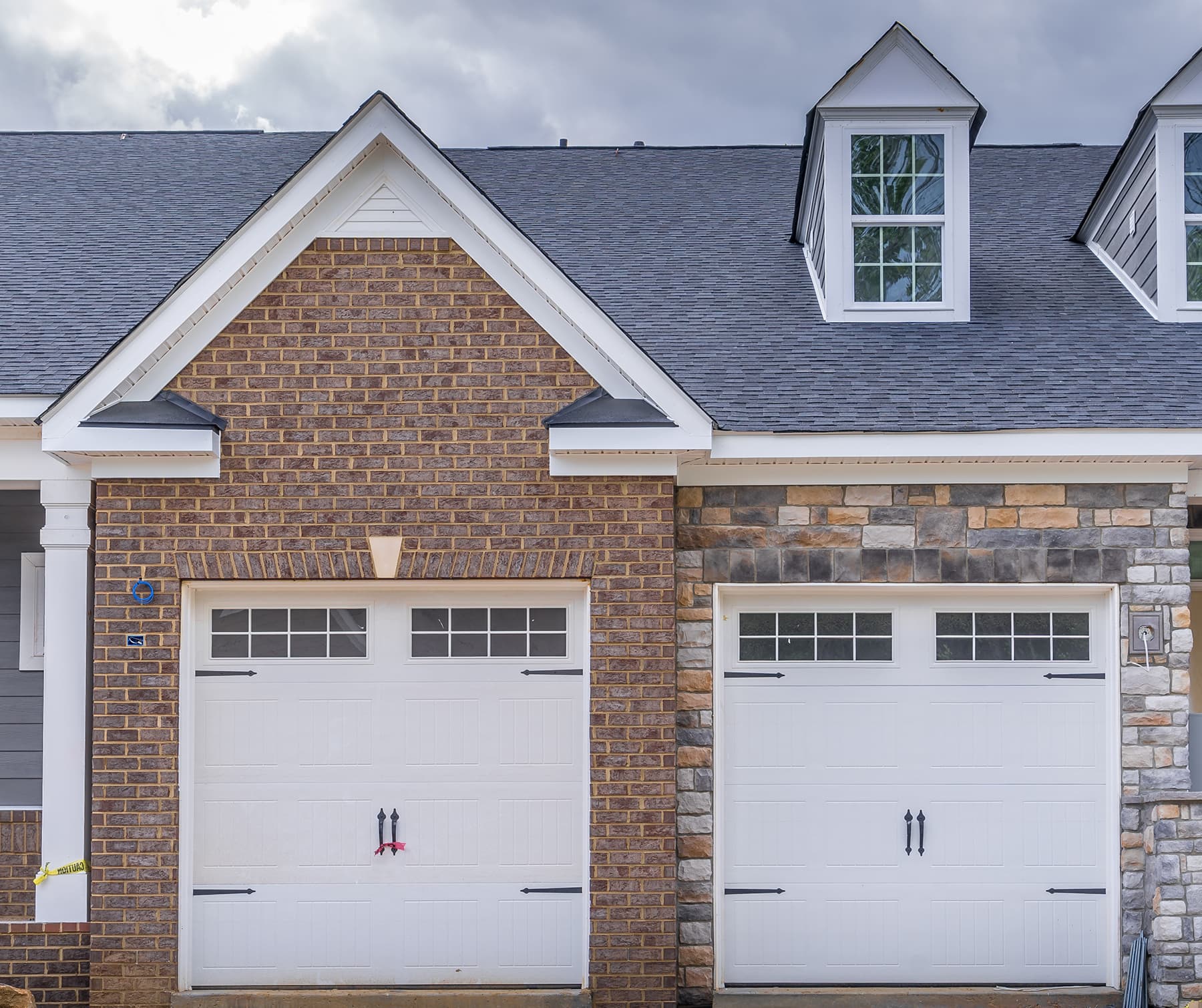
There are a wide variety of roofing options, some of which may be more suited for your climate, the type of home or other property that you have, your aesthetic preferences, and plenty of other factors including your budget or any requirements from your homeowners’ association.
If you have a historic home or a particular type of property with a look that you want to maintain, and of course your budget.
Asphalt Shingles
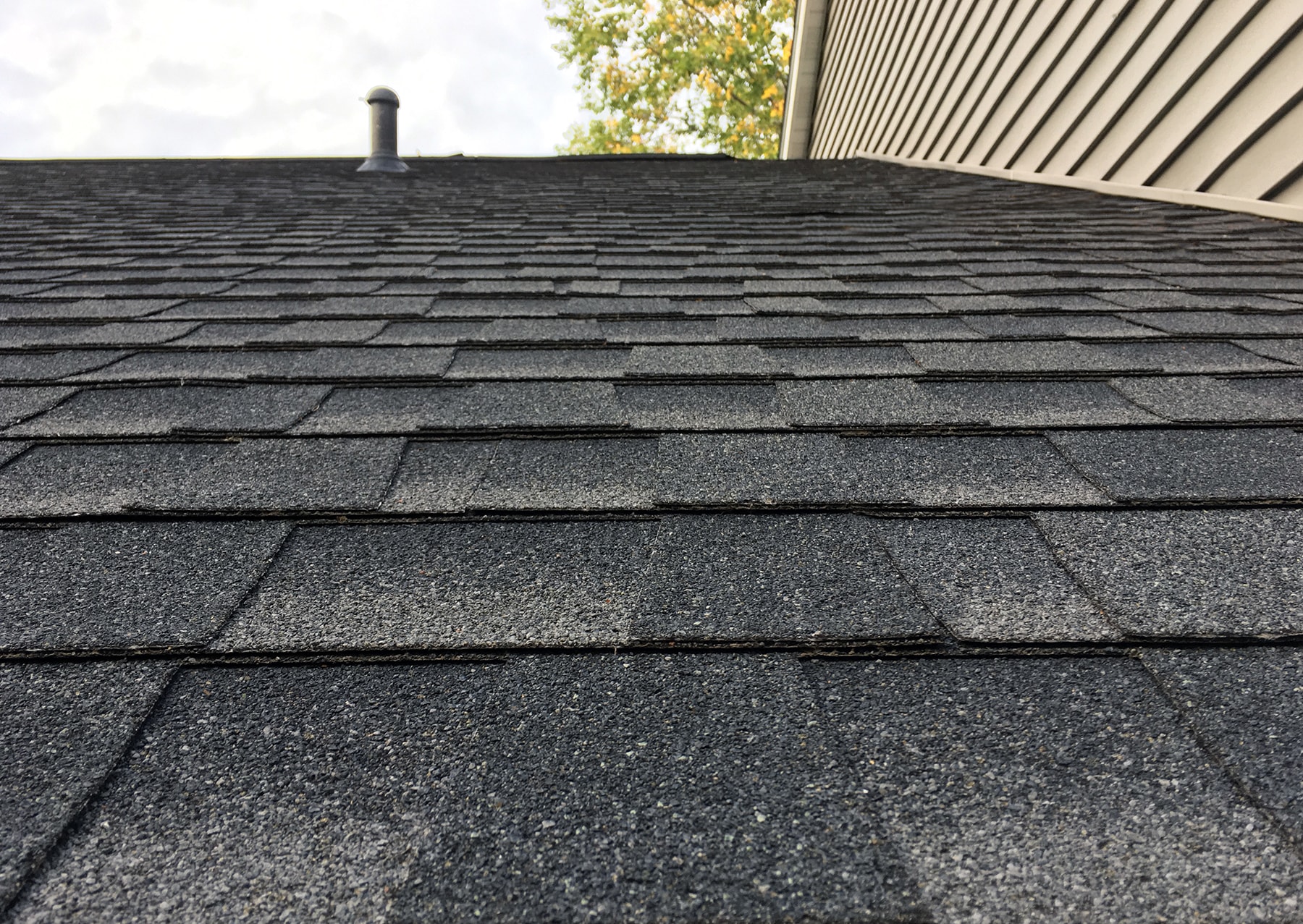
Asphalt shingles are one of the most popular & favorable roofing materials in many areas in the United States.
They come in a variety of types and colors and they generally cost-effective for most budgets, and are durable against bad weather.
Slate Roofing
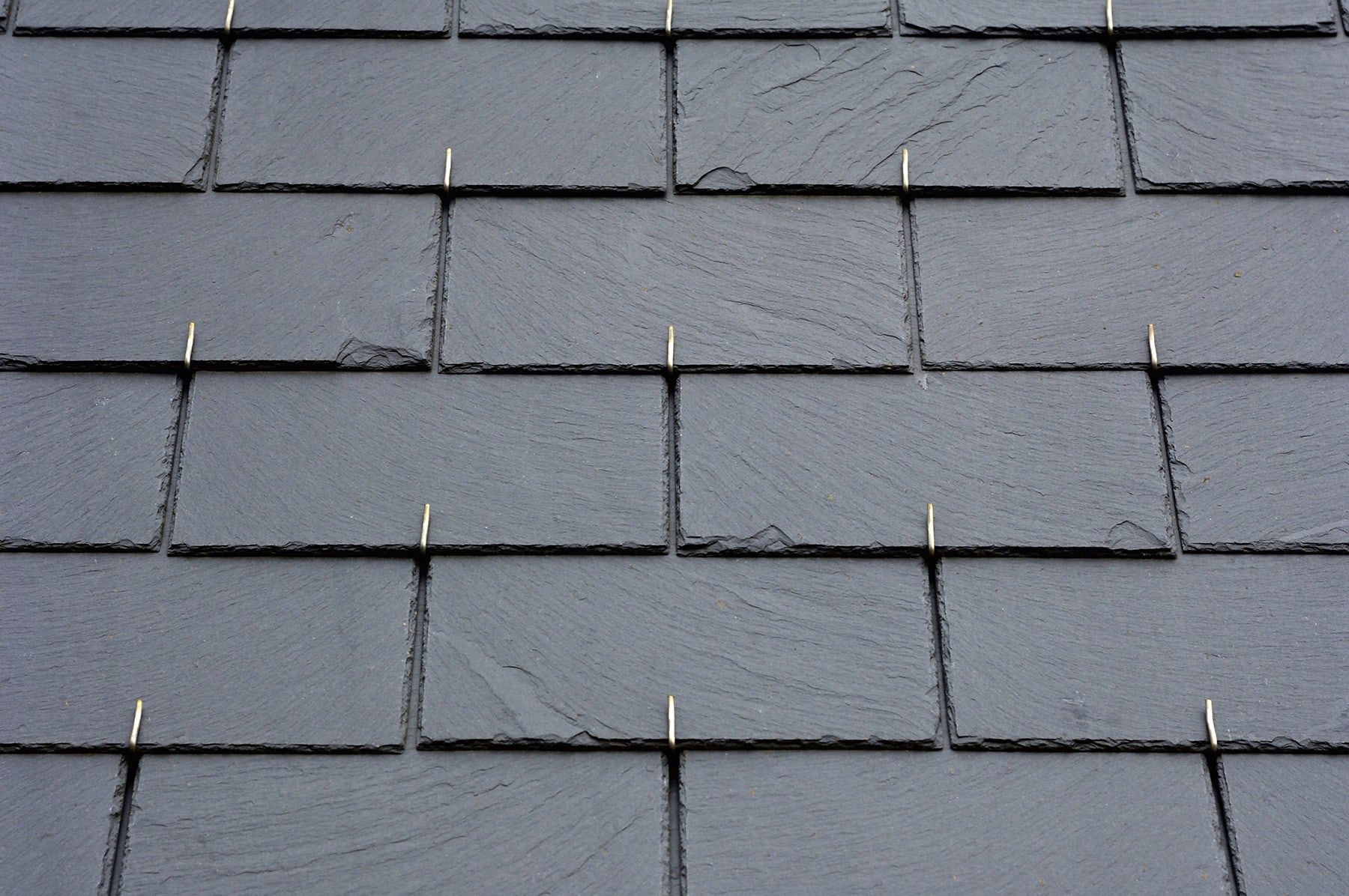
Slate roofing is one of the more high end options, and the cost of replacing a slate roof tends to be related to the square feet of the roof or upper floors of the building itself.
If your house or property already has slate roofing or if it would work for your place, your climate, and your budget, then you might want to consider slate roofing.
Despite the cost of a new slate roof, a slate roofing can add significant value to your home.
Wooden Shingles or Shakes
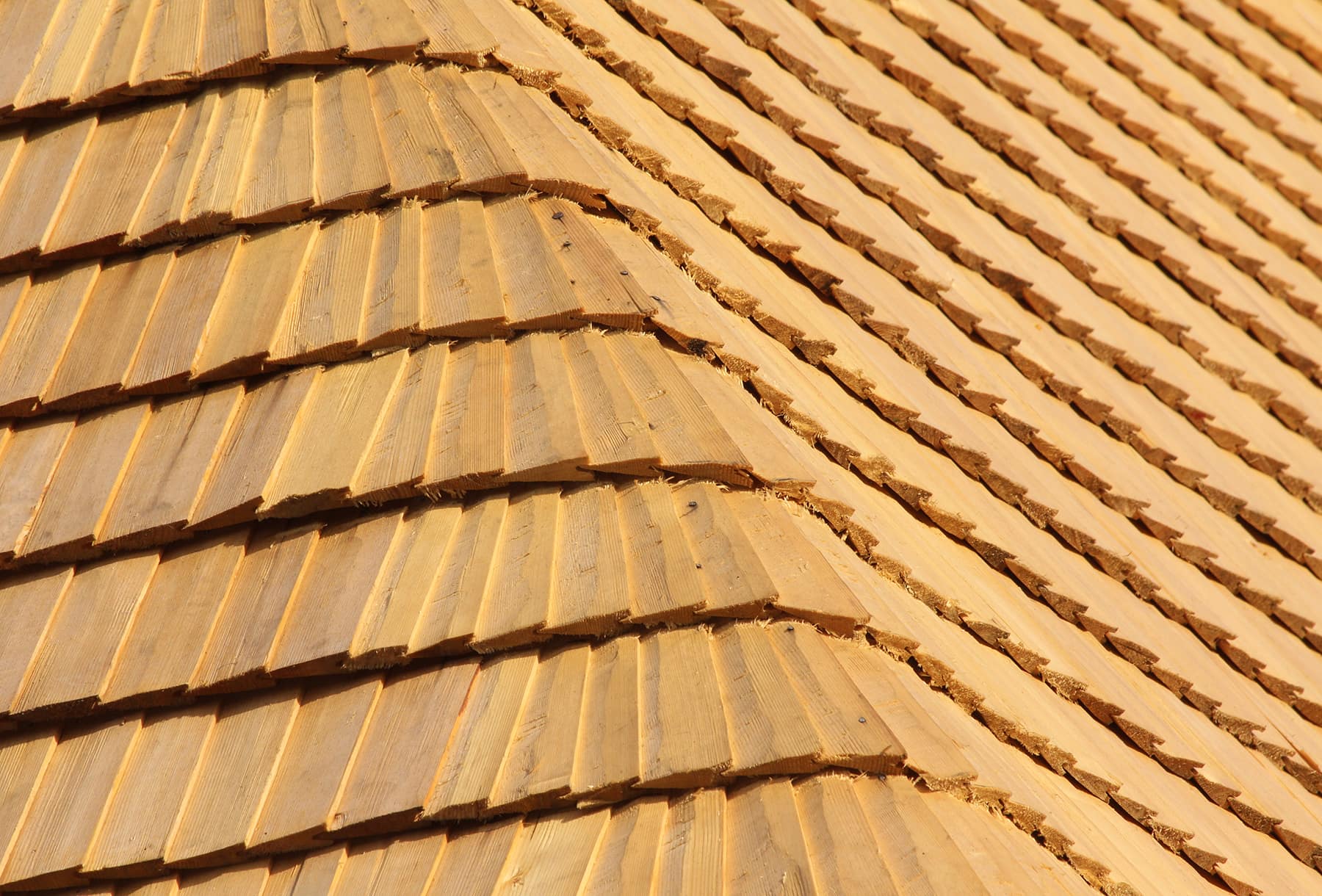
Shingles or shakes (or cedar shakes) tend to be popular in the Midwest and other areas with similar climates, and they can last for a while but do need to be replaced every 25 to 30 years because they can start to split, leak, or even rot due to water damage and related issues.
But they are beautiful and architects and homeowners – and prospective buyers – often enjoy the look of wooden shingles, particularly on certain types of homes.
However, they require more maintenance than other types of roofing materials, so keep that in mind if you are considering installing a new wooden shingle or shake roof.
Tile Roofing
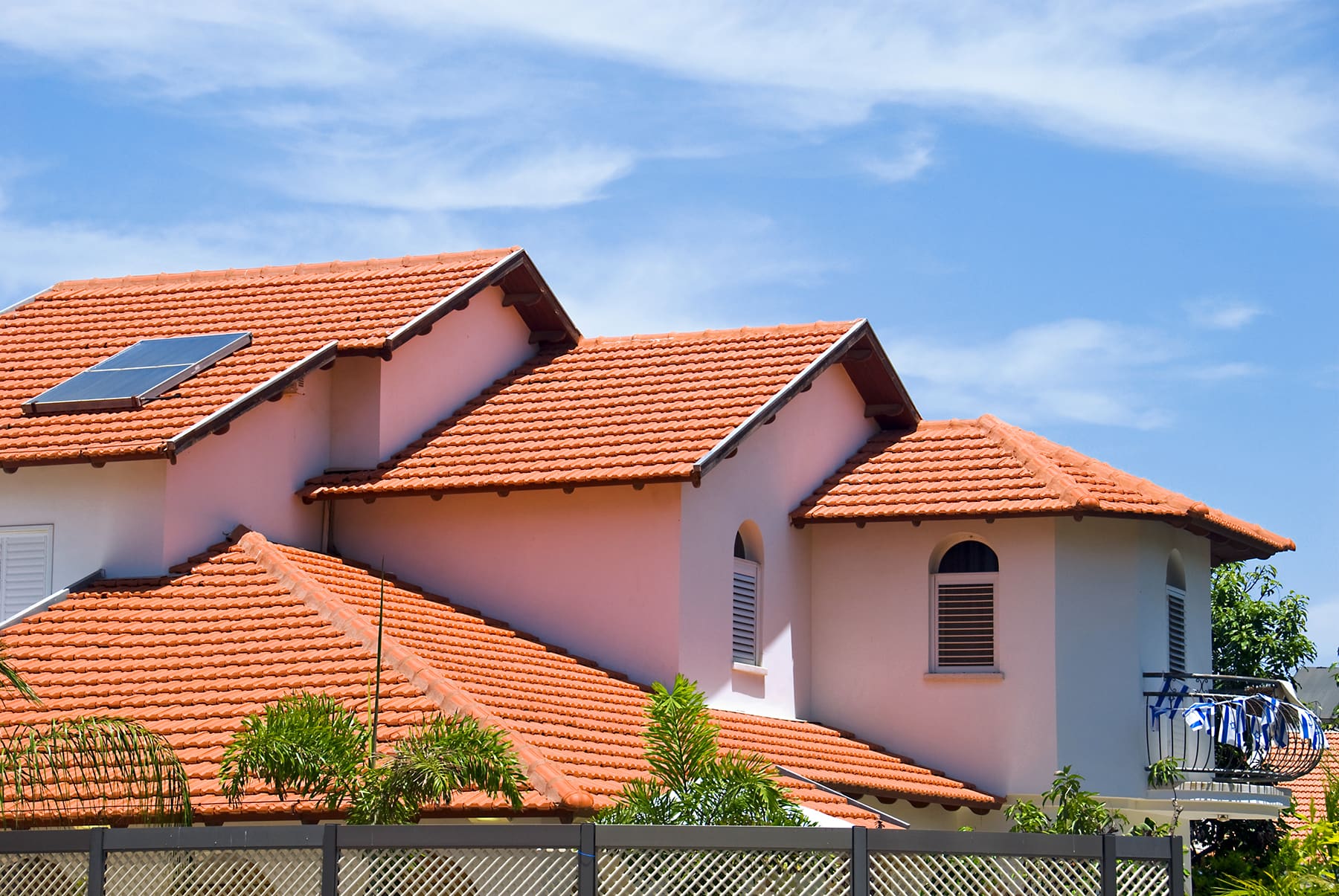
Clay or concrete roofing tiles can be a common choice for homes around the country, and they can be fairly inexpensive in terms of new roof costs.
Tile roofing can last for around fifteen to twenty years, and comes in a variety of colors and styles, some of which can mimic wood shingles or shakes if you are interested in that look for your new roof but like the cost and durability of tile roofing better.
Metal Roofing
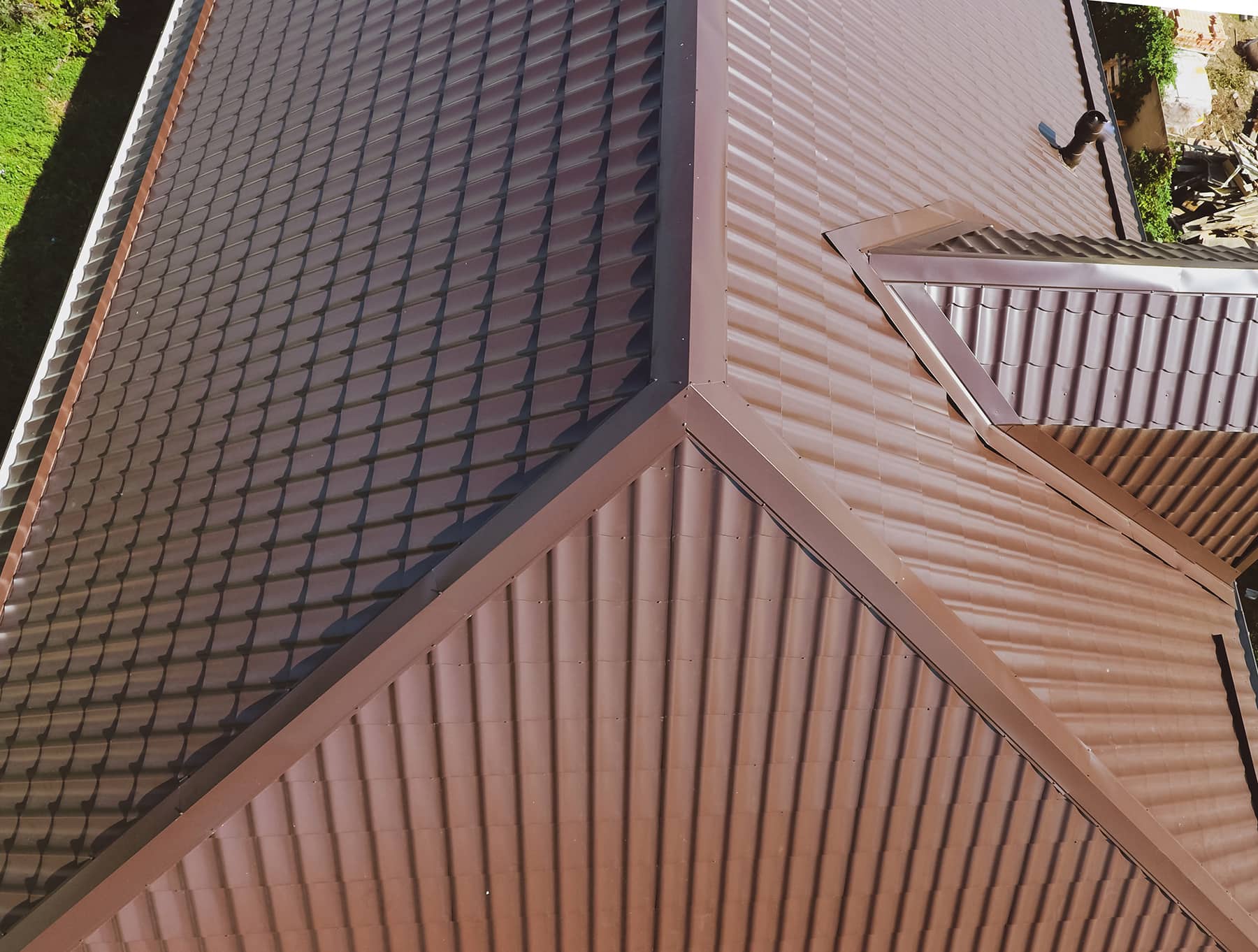
Metal roofing tends to be more popular in industrial or commercial properties than in residential properties, but either way, if you have a metal roof they may cost more upfront and have a different look or aesthetic than a more classic option for a residential property.
Metal roofing tends to cost less than slate, wood, or tile, but more than asphalt or tar and gravel.
However, metal roofing shingles can be more efficient for their heating and cooling capabilities so if energy efficiency is important to you, then metal roofing might be a great choice for your new roof, and your overall budget.
Tar and Gravel
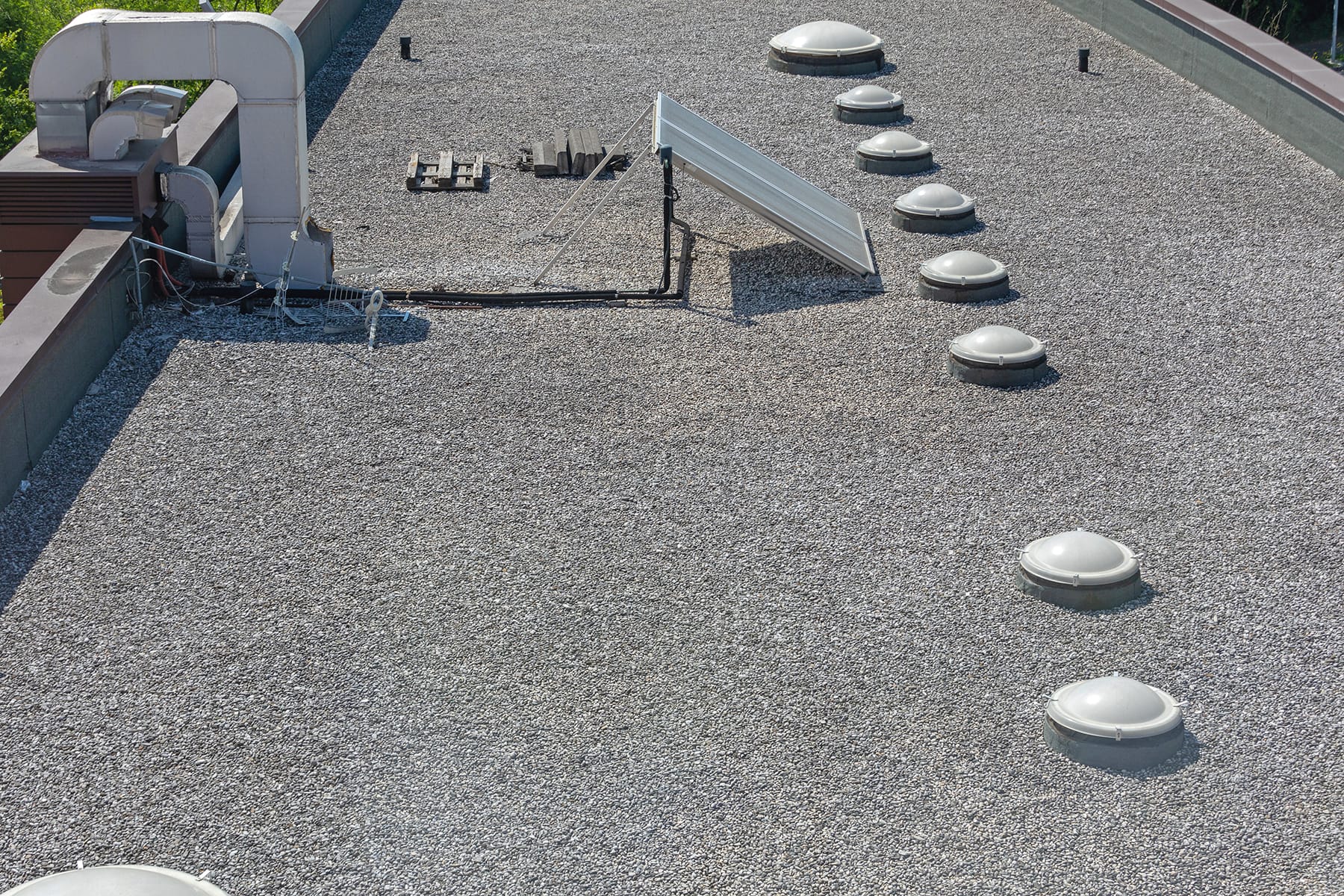
Looking for something that will last a long time and be relatively easy to replace?
Tar and gravel roofing is considered to be a relatively simple option if you already have a home or property with a flat roof and often makes it easy to repair roof leaks yourself if you are relatively handy.
Choosing a Color For Your New Roof

Selecting a color for your new roof can be almost as complicated as deciding what type of new roof you should get in the first place.
While the material that you choose for your roof replacement can affect your color decision (since after all, some materials are only available or even advantageous in particular colors), a lot of the color selection is up to you and any other decision-makers in your household.
We’ve got some advice on choosing a color for your new roof that might help you decide, and your roof installation contractors might have some ideas as well.
Even just driving around your neighborhood or browsing examples of similar styles of houses online so you can see what catches your eye can help you decide on a color and material when you are installing a new roof.
Venting a New Roof
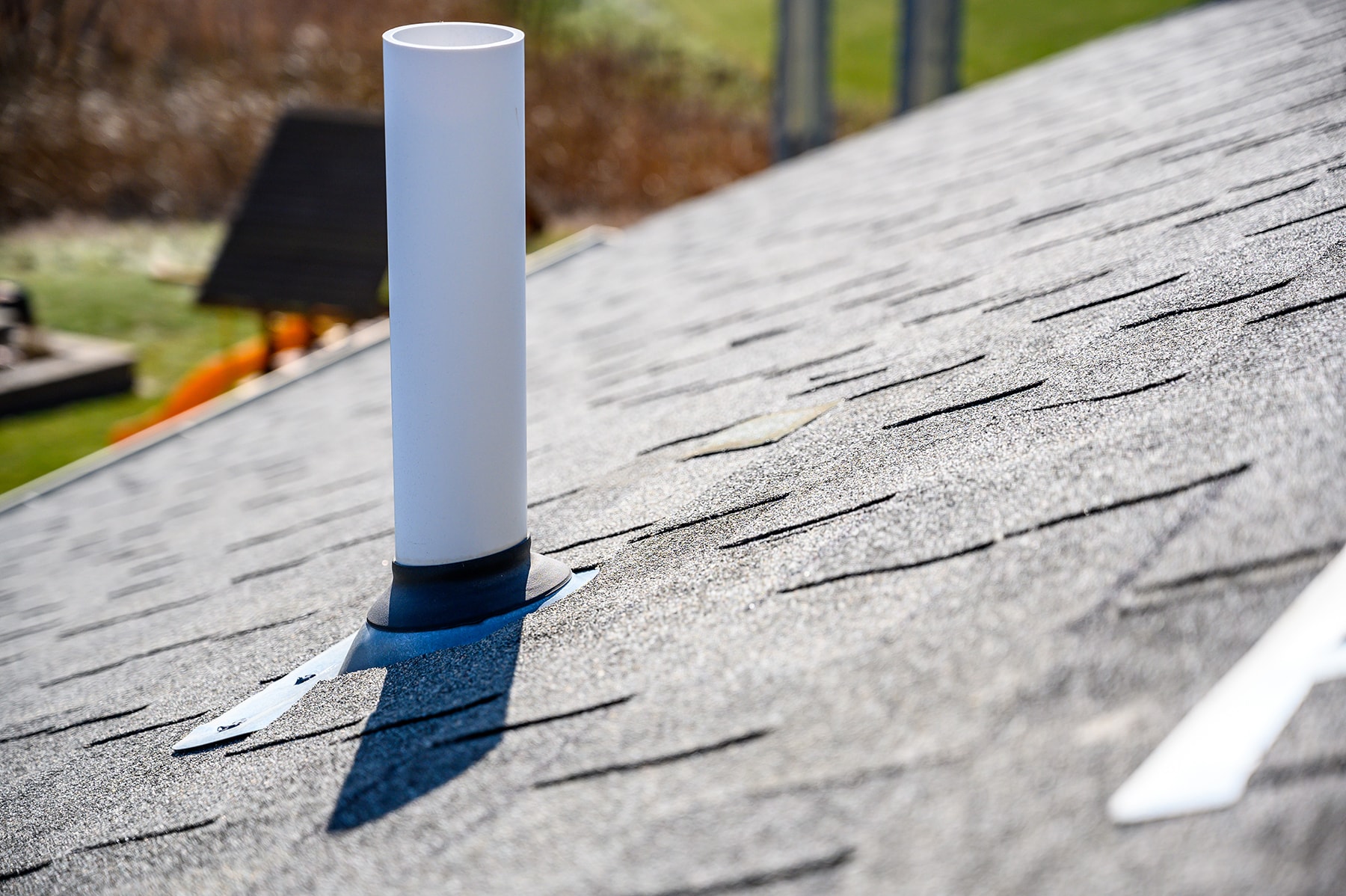
Making sure your roof and your home have appropriate ventilation is an essential part of installing a new roof, repairing your roof, or even making sure the roof over your and your family’s heads is secure.
Without proper ventilation, the attic or space directly under the roof may get too hot (heat rises after all), causing damage to the roof such as cracked or peeling shingles.
The air flow from a roof vent also reduces moisture and condensation in and around the roof, protecting it from mold, mildew, weakened roof support beams, and may entice pests like rats, squirrels, and racoons (among others).
When the warm air from below rises up, condensation forms, causing your roof to become damp or even leak – hence the need for venting to let that moisture out.
Venting a new roof – or any roof – is based on the fact that warm or hot air rises.
Therefore, in the summer or any hot weather, the attic and upper floors of your house are likely warmer than the lower areas.
Proper venting or ventilation is important for keeping your home cool in the summer and warm in the winter.
What’s more, venting your roof may be required by code depending on where you live.
Ridge vents or ventilation should typically be placed near the peak or peaks of the roof with soffit vents in the eaves.
Cupola vents and gable vents can be used for those types of roofs; powered vents or electric vents include fans built into the attic to increase air flow.
Powered vents are often used in larger structures where static vents may not be able to get the job done.
Installing Skylights in a New Roof
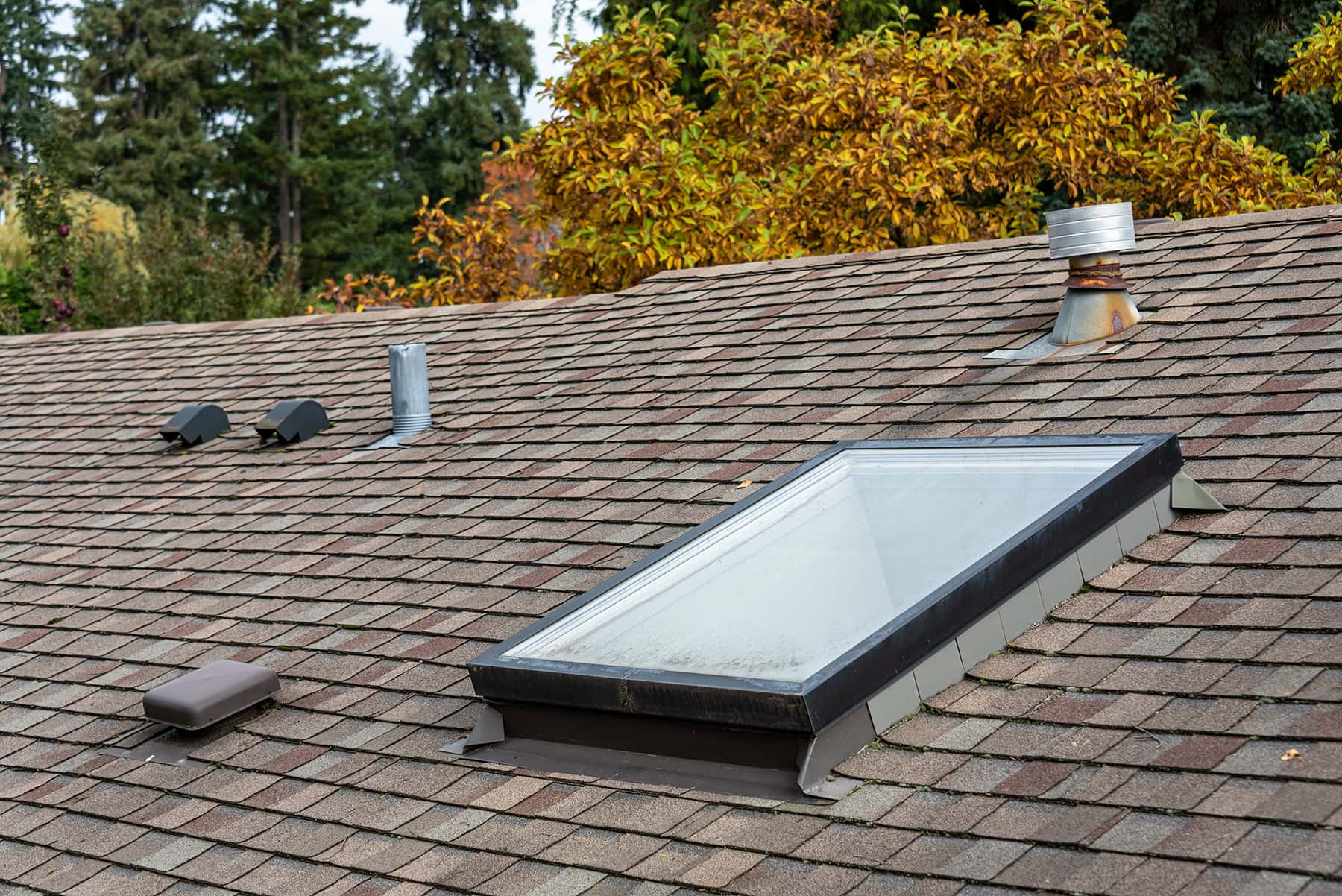
Having skylights installed can flood a room with light and add value to your home.
Installing skylights in a new roof or adding skylights to an existing roof is definitely a job for professionals – we definitely don’t recommend doing it on your own.
That’s because putting in a skylight involves cutting a hole in the roof and then installing structural metal framing, refinishing the interior ceiling below, and placing the glass for the skylight as well as the metal flashing and roofing paper around the newly installed skylight.
Skylights generally take from one and a half to three days to install in your roof; the length of time it takes depends on the weather and the pitch or steepness of the roof and interior light shaft depth and shape.
They are done in two phases; the exterior phase where the roof is opened up and the interior phase where the ceiling around the skylight is finished.
DIY Roofing Versus Hiring a Roofer
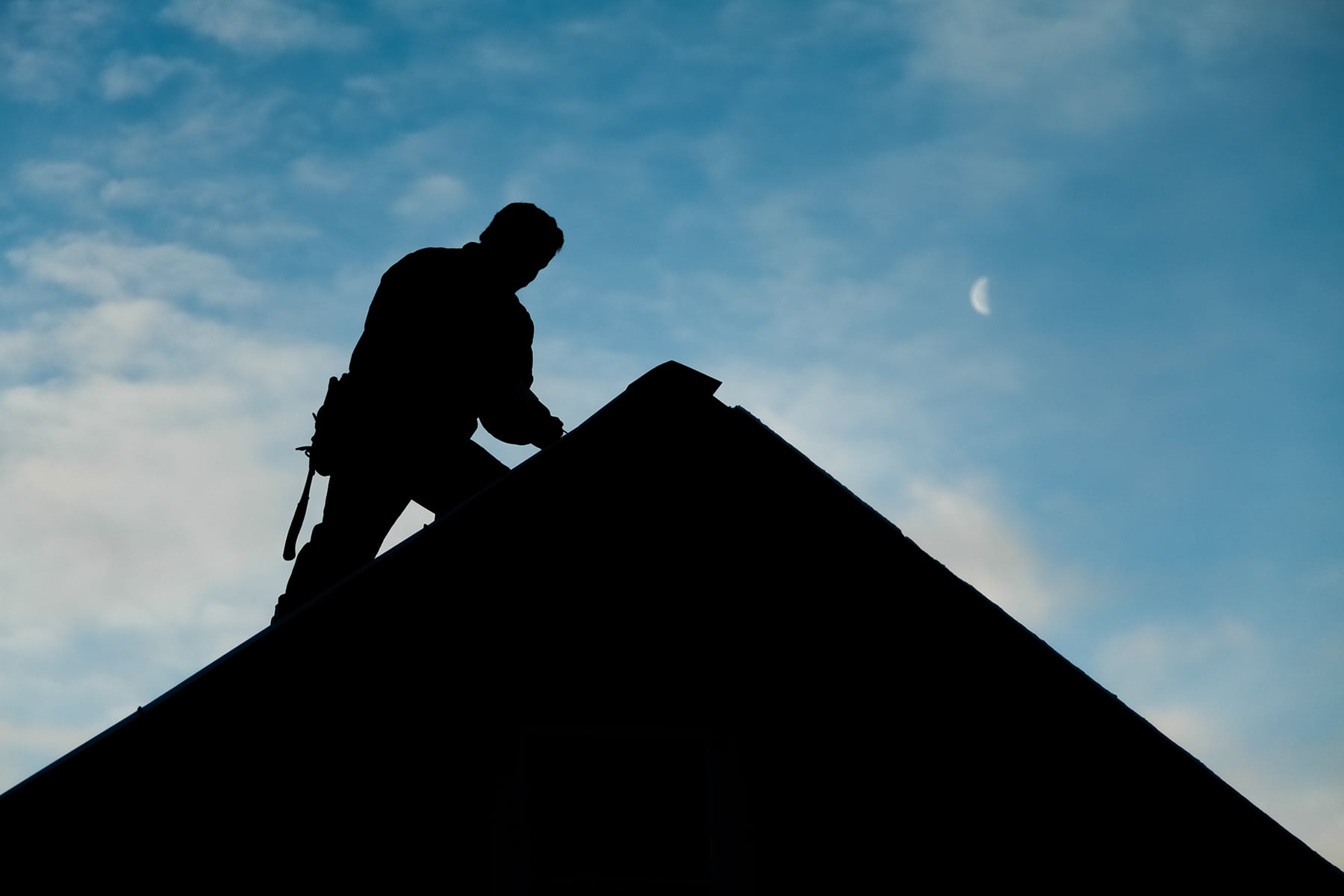
Replacing a roof is obviously a difficult thing to do on your own, if not impossible unless you have a lot of roofing experience and a related construction or homebuilding background yourself.
And even with the right tools and some experience and some handyman skills, you might still not be able to do the job properly.
Since knowing how to do roofing properly is a specialized skill and you might not want to cause problems – or further damage in the case of leaks or other major repairs – to the actual roof over your head.
That said – to all the avid DIYers reading this – we’re not doubting your talents – but not only is replacing a roof or building a new roof complicated, you’ll want to make sure that your roof replacement is covered by your insurance.
This includes the costs and price of the new roof as well as the costs of having your roof repaired, if you are replacing a roof after major damage due to a hailstorm, tornado, hurricane, or other potentially catastrophic weather event.
Generally, if it is time to replace your roof, that means you are looking to hire a contractor or roof installer to do the job, and here’s how to hire the best roof installation services for your budget.
How to Hire a Roofing Installer and Get a Roof Estimate
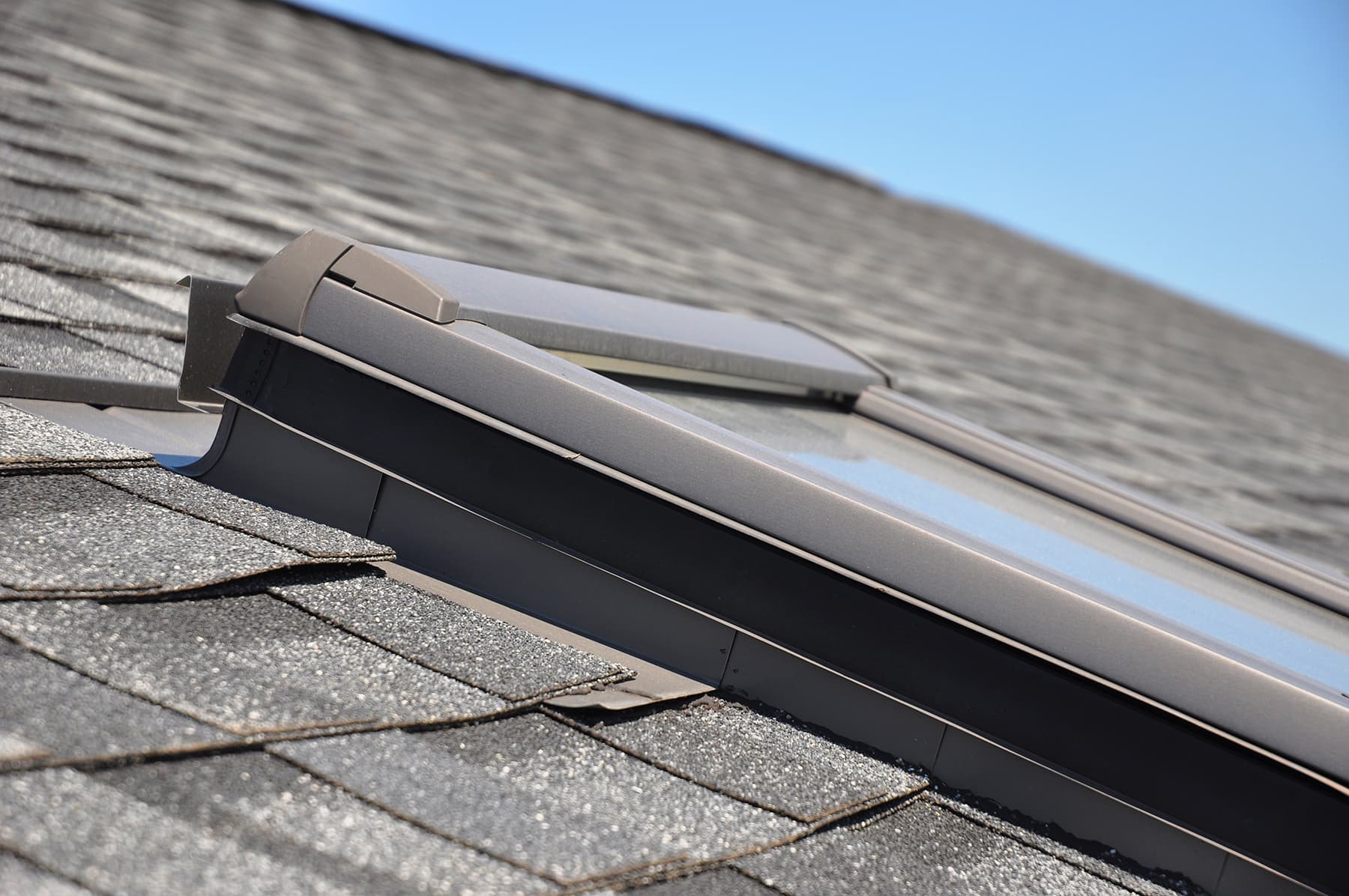
The roof over your head might be one of the most important aspects of your home – if not the most important aspect.
Therefore, finding the best possible roofing installer or roofing contractor might be one of the most important vital decisions you will make as a property owner.
Generally, if it is time to replace your roof, that means you are likely prepared to make a major upgrade to your home, or you are just recovering from a major weather event or disaster – or both.
And either or both of these options require placing a lot of trust in your roofing contractor, since they are most likely upgrading one of your most valuable assets.
Whether you are looking to replace your roof or you need to make significant repairs, you’ll want to do some research, check out the reviews for various roofing companies in your area, and look for referrals from friends and family as well as localized apps like Nextdoor or Angie’s List, or even a Facebook group for your community if there is one.
In fact, your best bet is to ask your neighbors for referrals (chances are that some of them have replaced their roofs or gotten new roofing somewhat recently) and to actually call up the roofers at the top of the search results and ask them some questions.
And of course, there are some key questions that you should ask your roofing contractor before you sign on the dotted line, and some of them might be almost as important crucial as finalizing or agreeing on the cost of your roof replacement.
For instance, you should ask…
- If this particular roofing company familiar with your neighborhood and your area and your unique climate.
- If you can see some examples of their roof installation work.
- Whether or not they have references or testimonials from previous customers that they’ve installed new roofing for (chances are that a given roof installation company will, but it is fairly common that roofing contractors will solicit local homeowners after a major weather event so you’ll want to make sure everything checks out before you sign off on their estimate for installing a new roof).
- If they can work with insurance companies and possibly public adjusters in the case that they are replacing your roof in the case of a major leak or other disaster.
We suggest getting multiple estimates for your roof replacement or repair project and comparing them when you are looking for a roof installer – that way you can learn more and understand the full spectrum of your options.
Looking for an Estimate on Roofing Costs?
Enter your square footage below in our roof replacement calculator for an estimated cost.
Cost of a New Roof
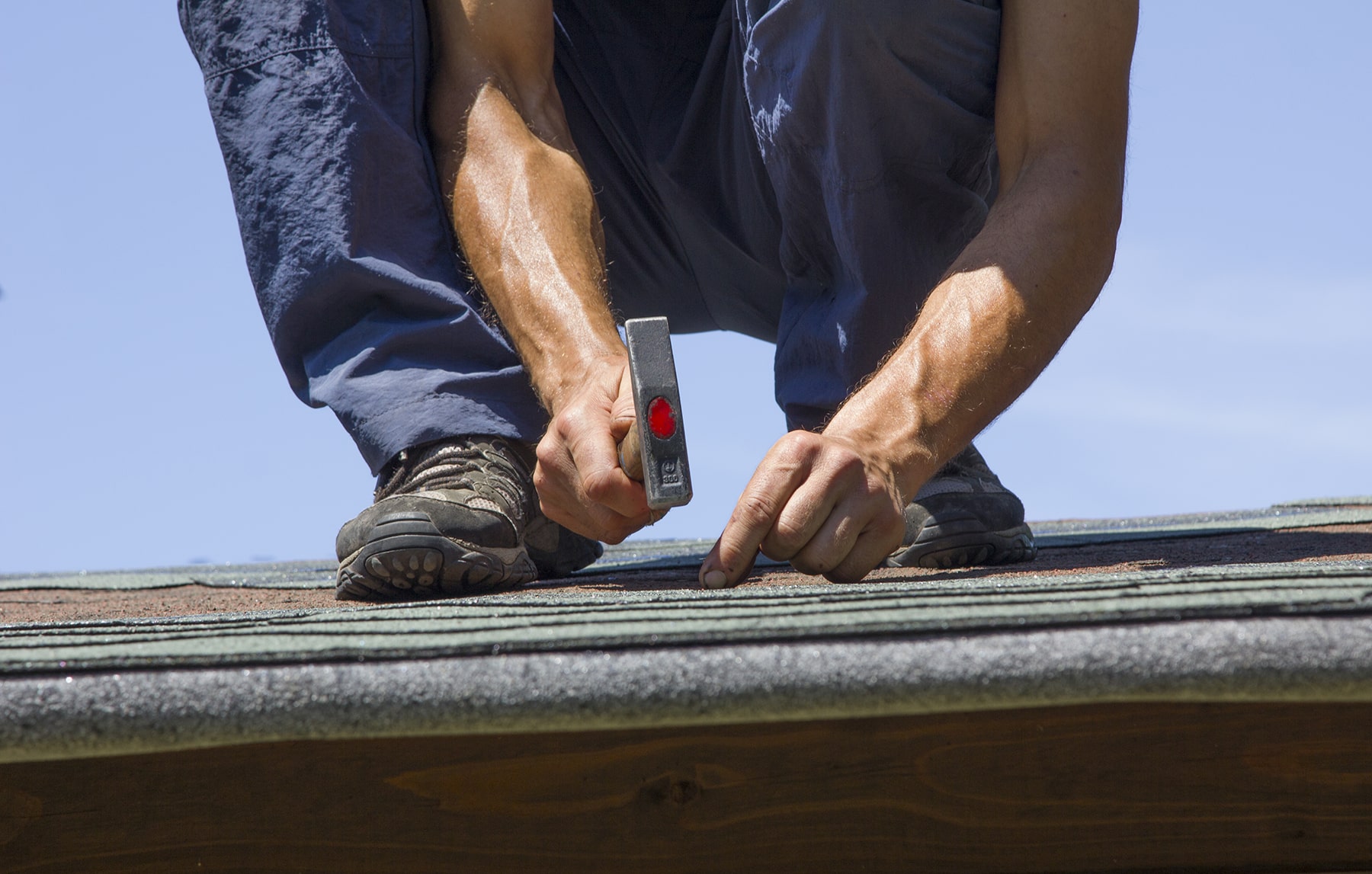
The cost of a new roof varies widely depending on the type of roof that you want, your location, any existing damage to your roof, and whether or the roof being installed is an overlay (meaning the new roof company doesn’t have to remove your existing roof) or a complete roof removal and replacement with a new roof.
A roof replacement is a costly endeavor and probably one of the bigger decisions that you’ll make as a homeowner in general.
So you’ll want to take the time to do it right and find a roof installation company or roof installation contractor who you feel comfortable with, who can answer all your questions to your satisfaction, and who can help you replace your old roof with one that fits your style, your needs, and adds significant value to your home or other property.
So how do you start installing a new roof?
Getting in touch with an experienced roofing contractor who can help you determine if you need to replace your roof, the costs of getting a new roof, advice as to the type of new roof that you should choose for your home or commercial property, and even providing estimates for your insurance.
Also, you can use any one of the roofing calculators readily available online; what’s more, you should get estimates from multiple contractors before committing to a particular roofing company and price.

